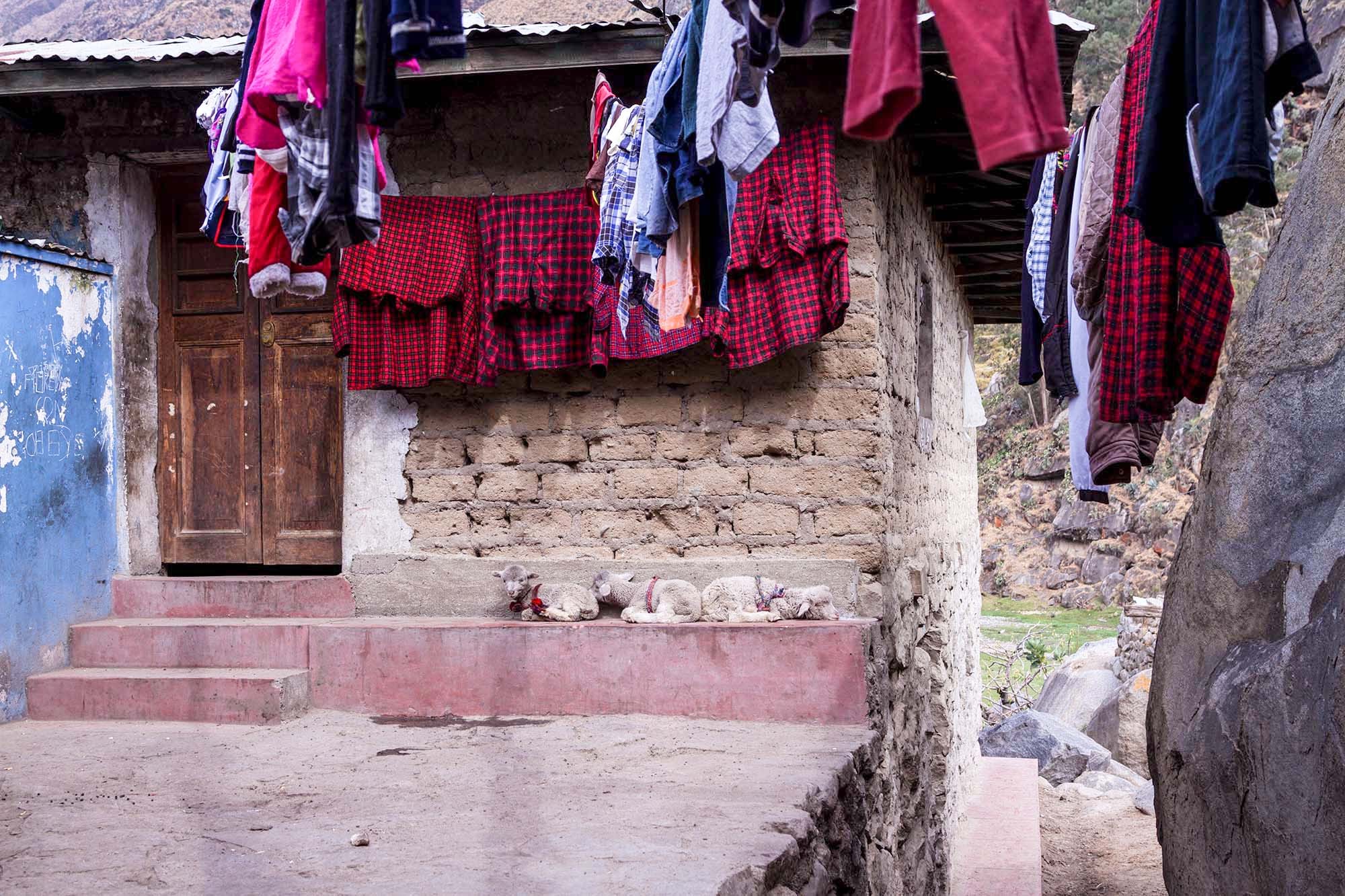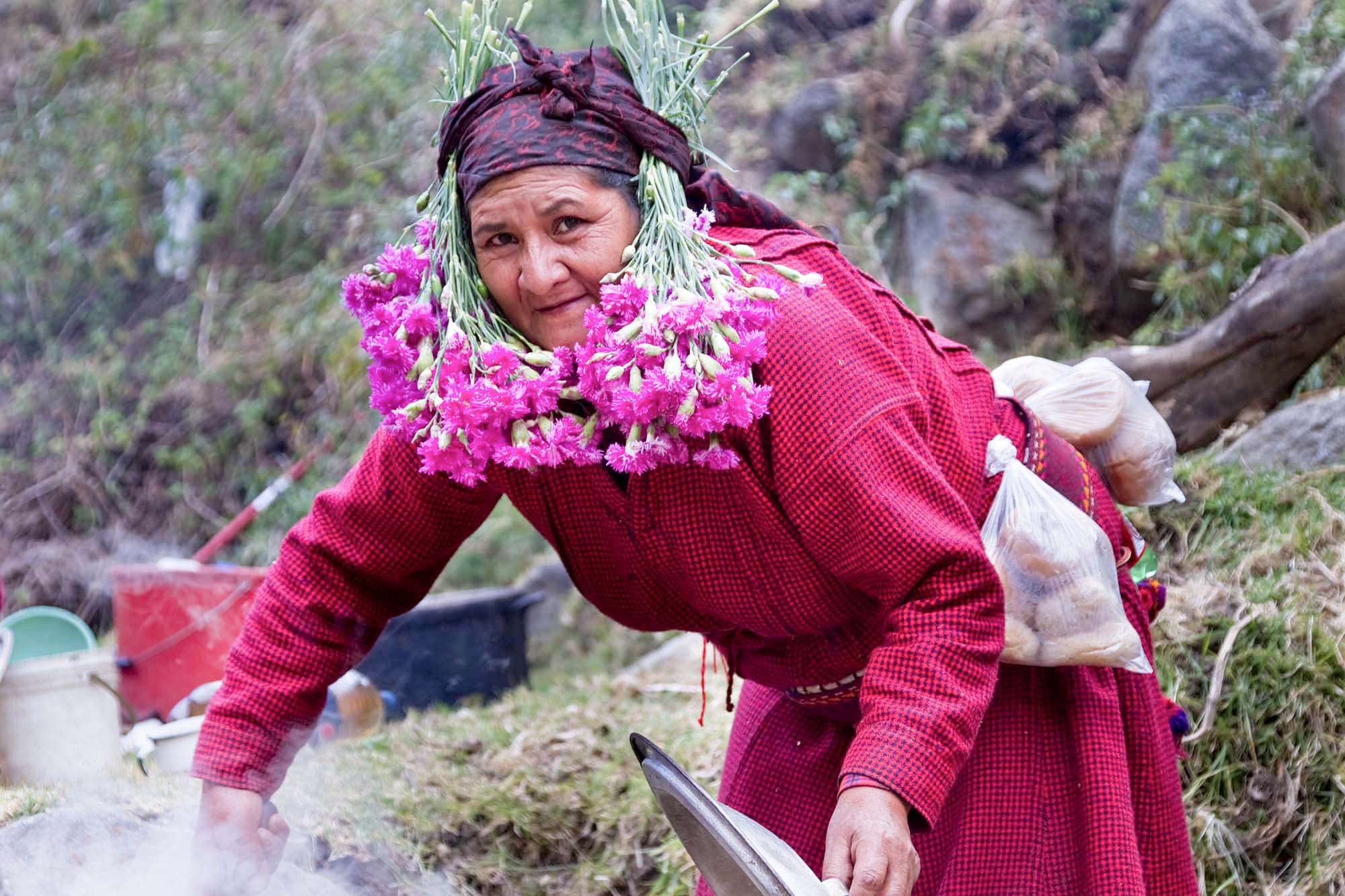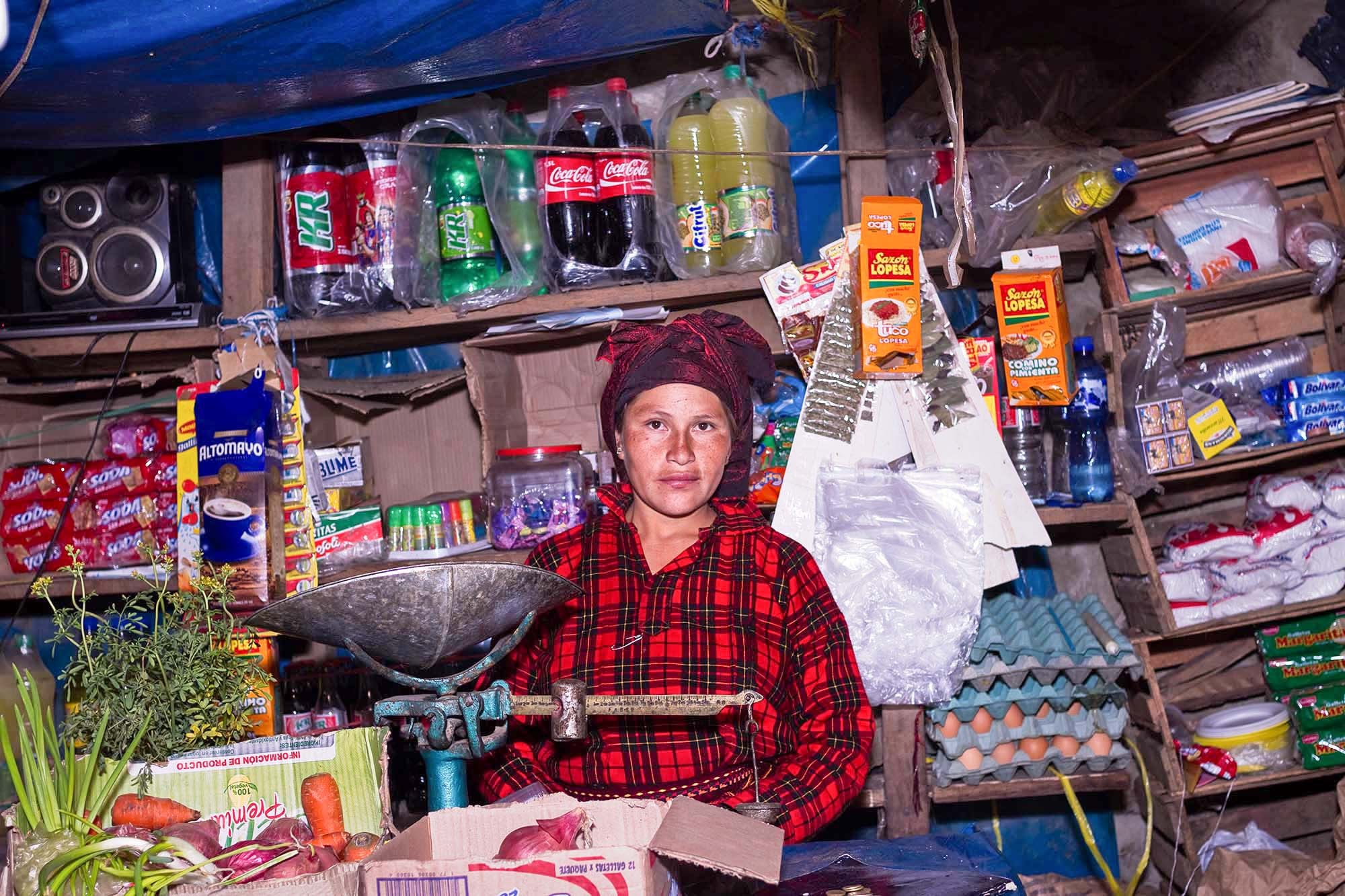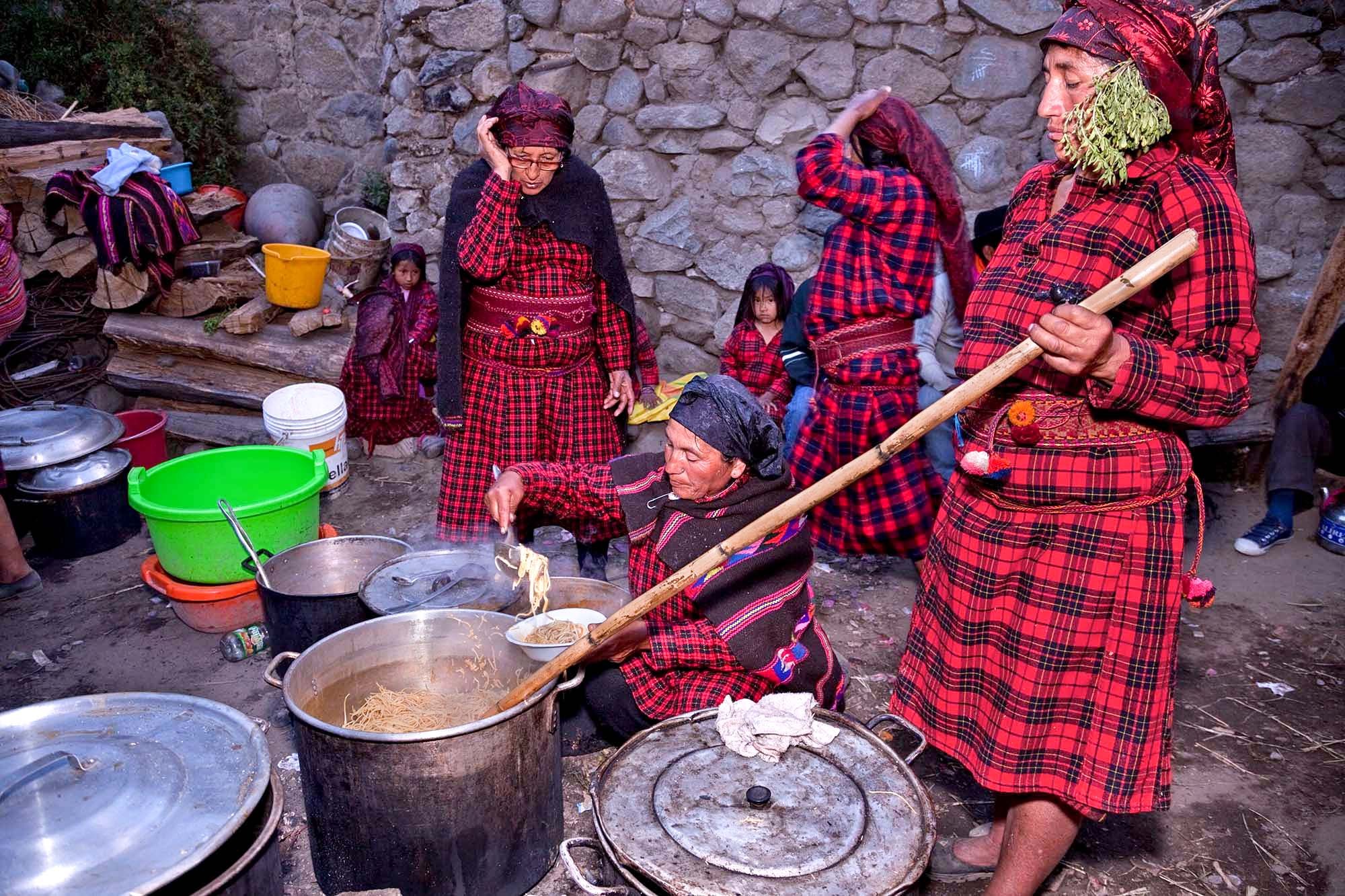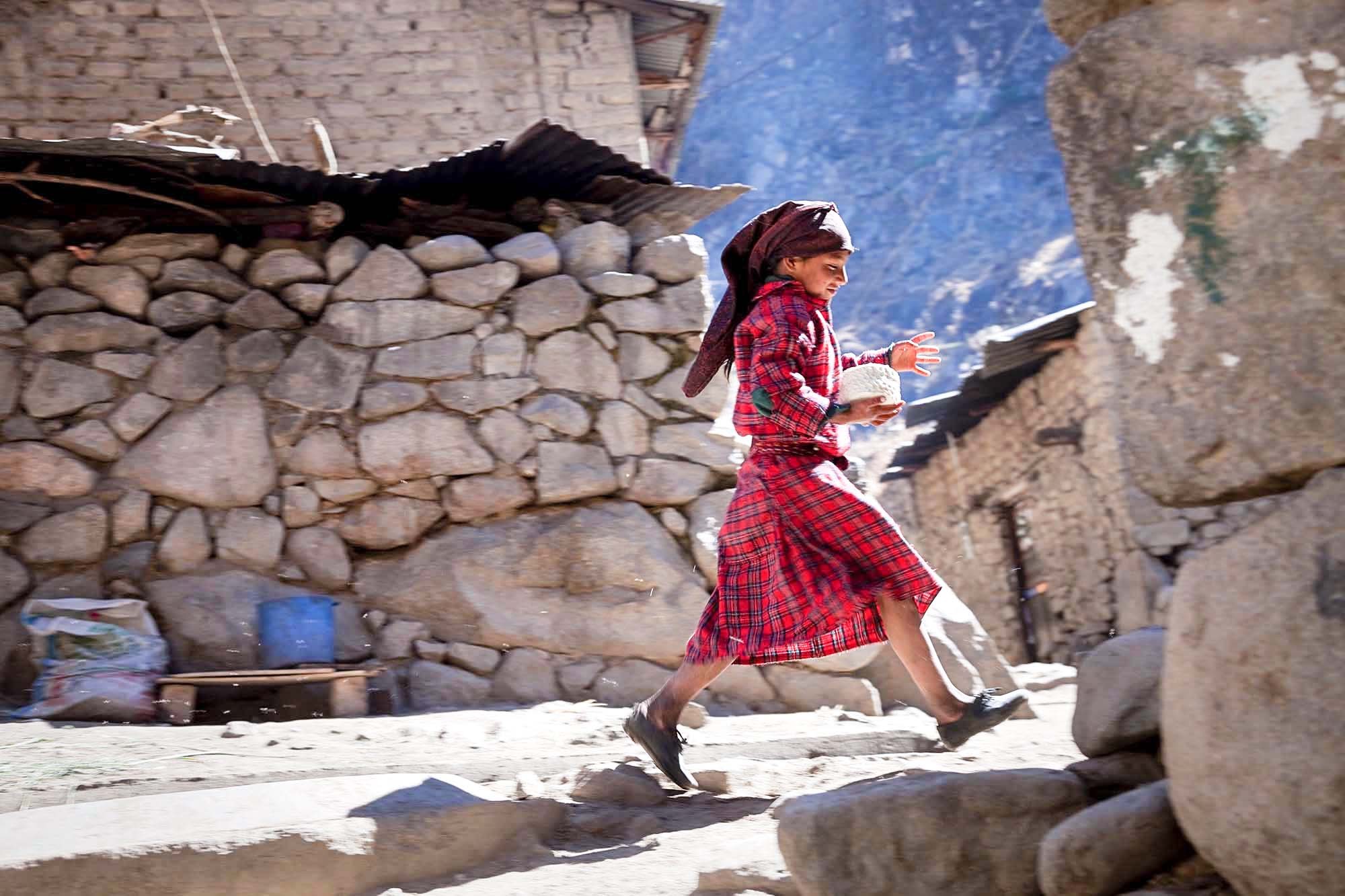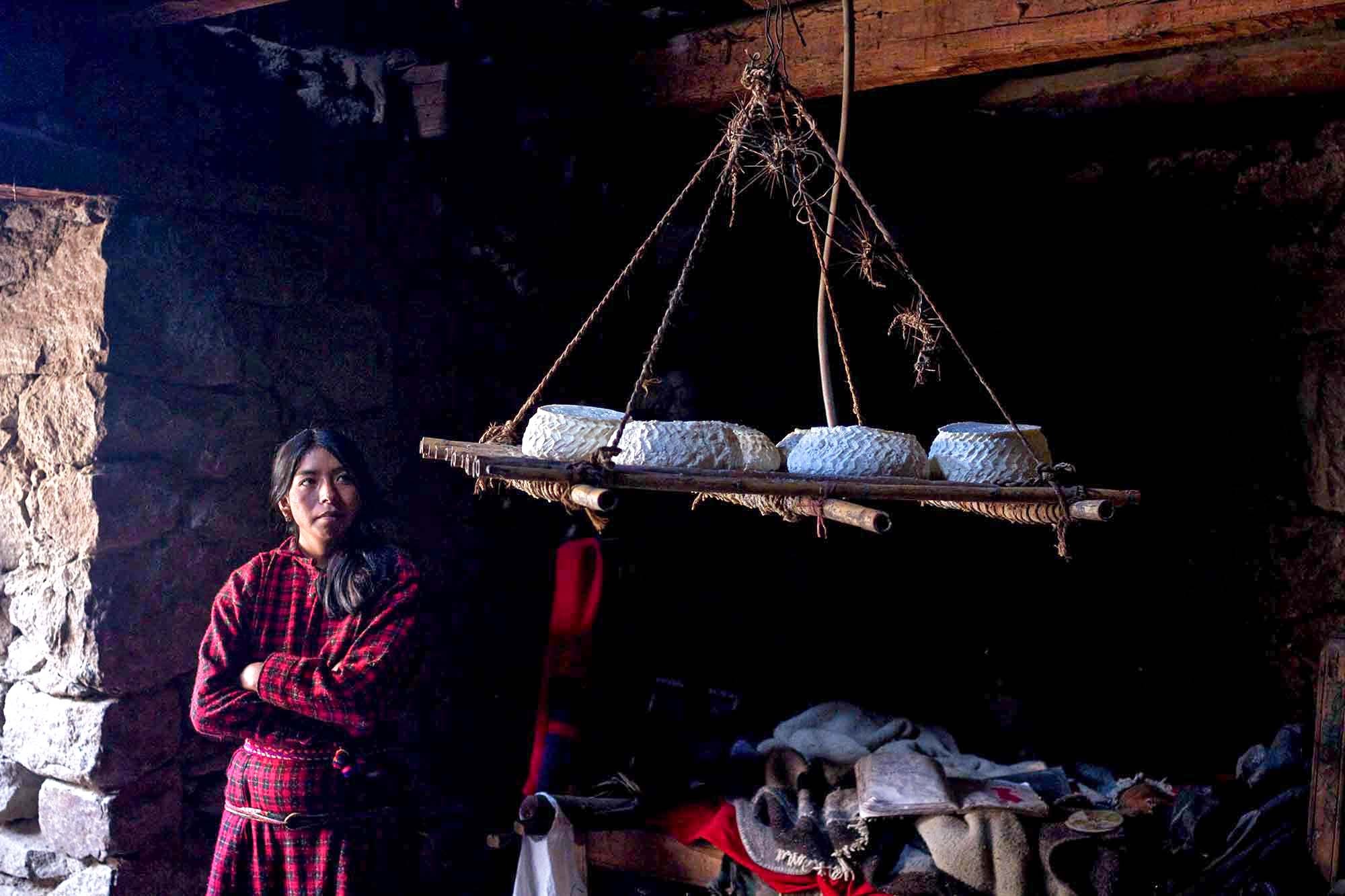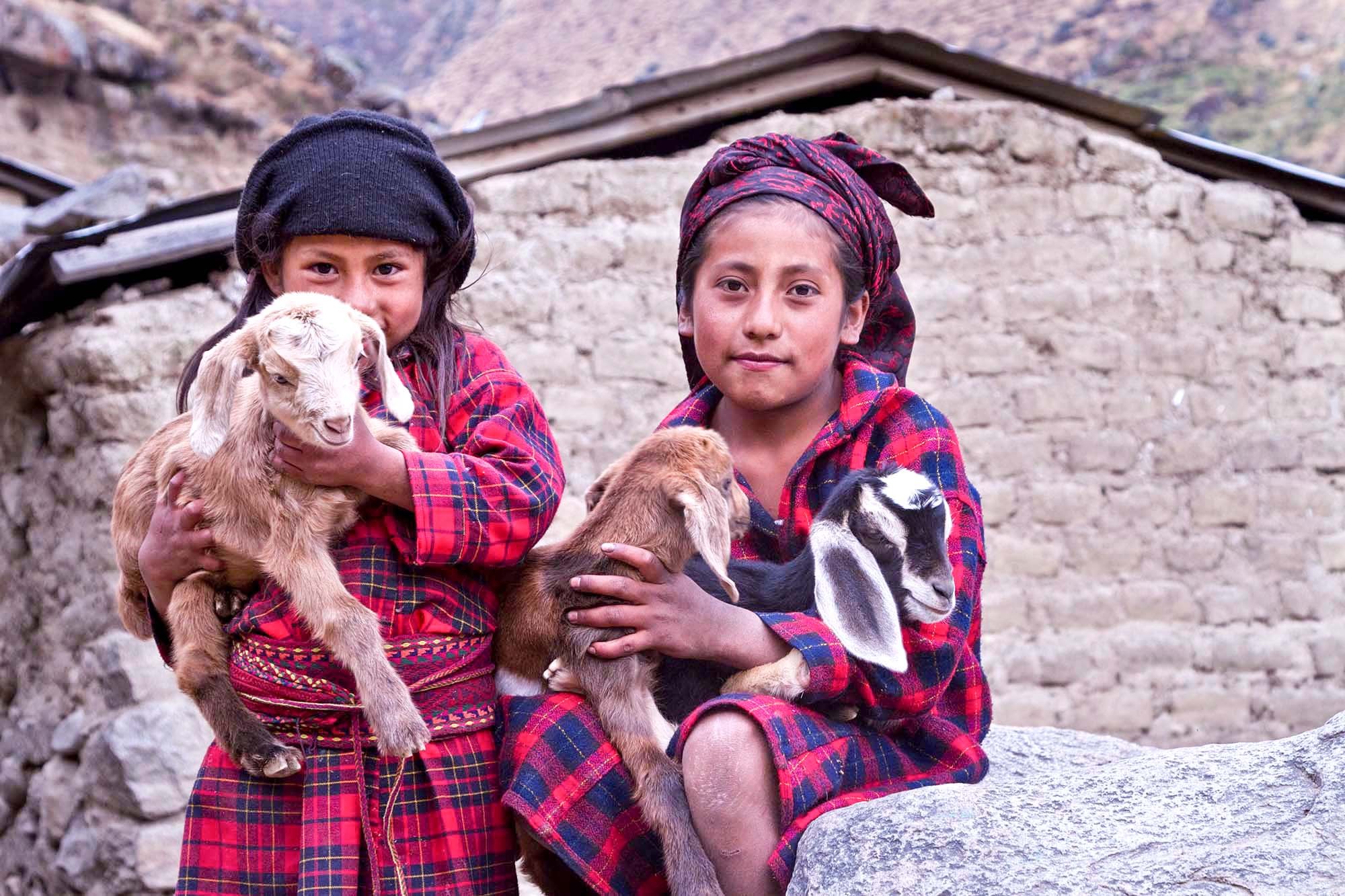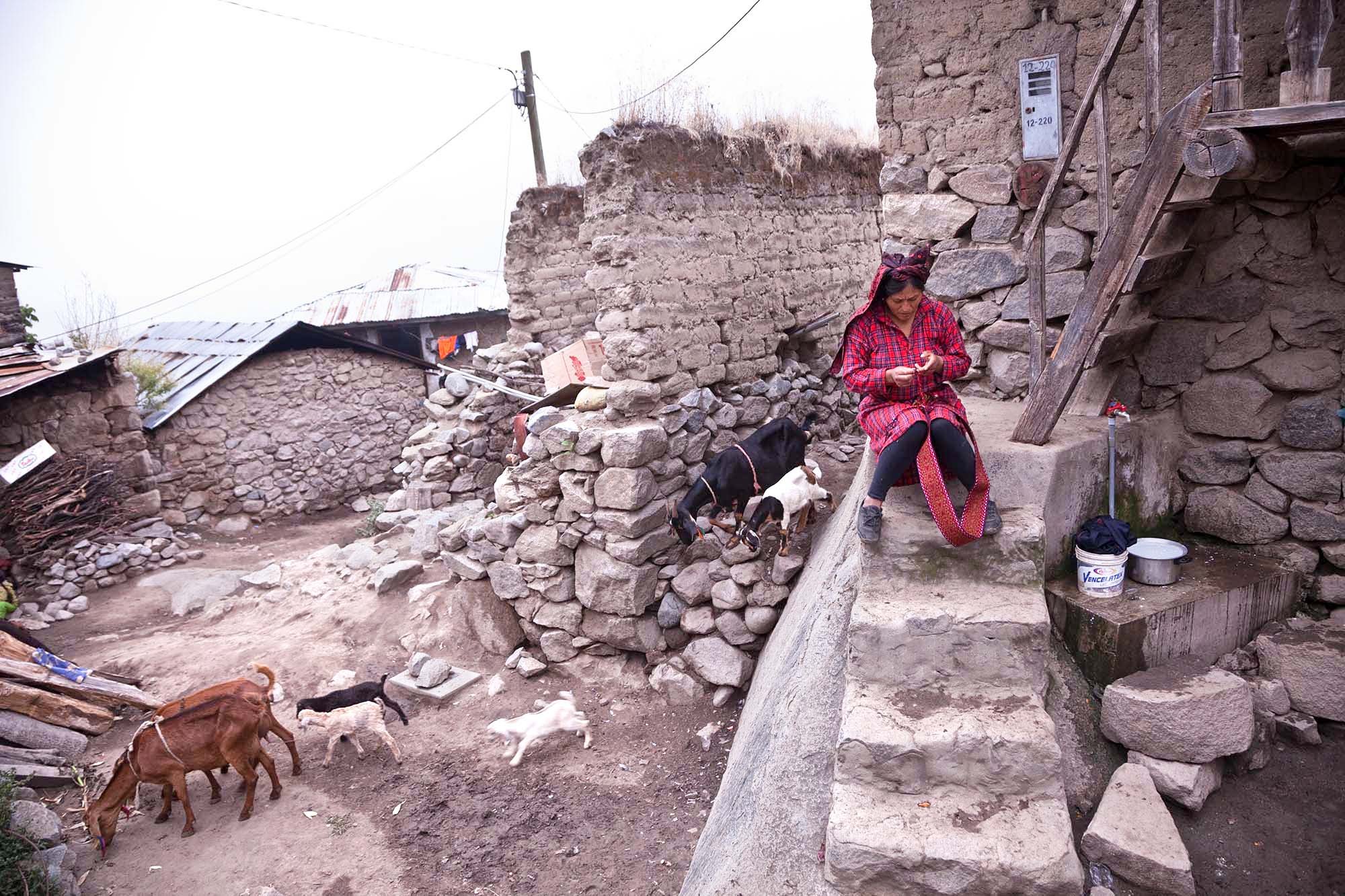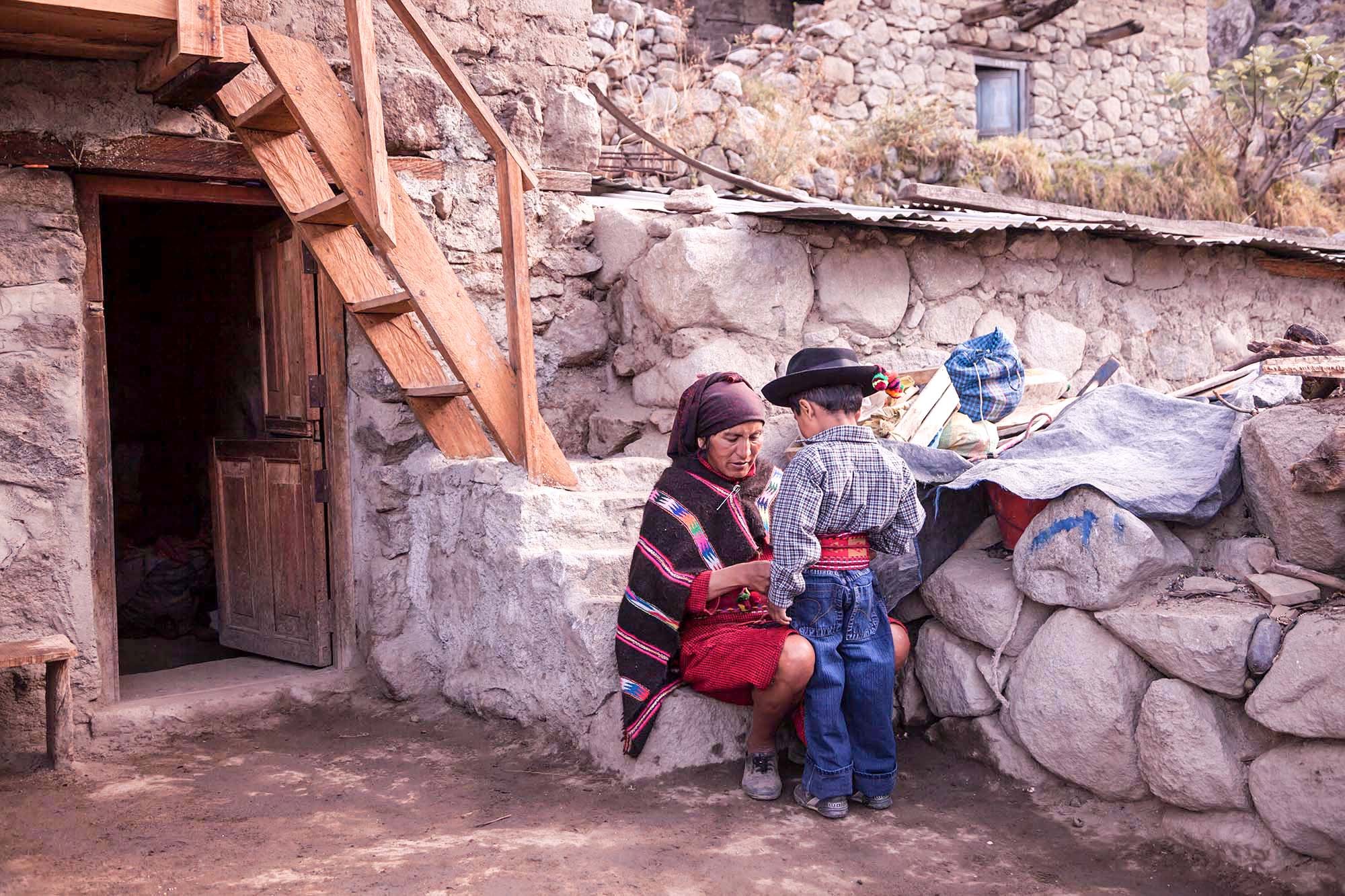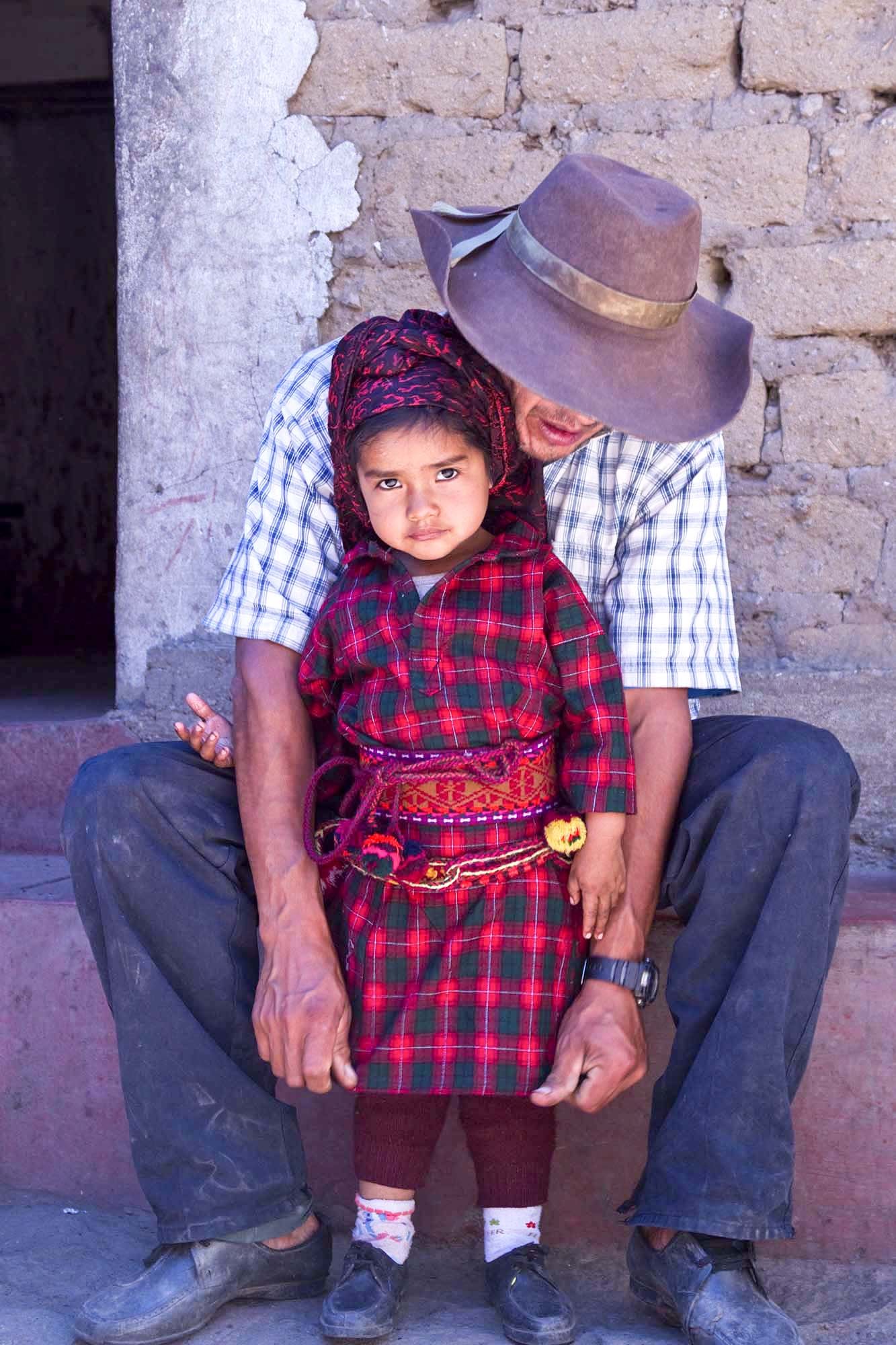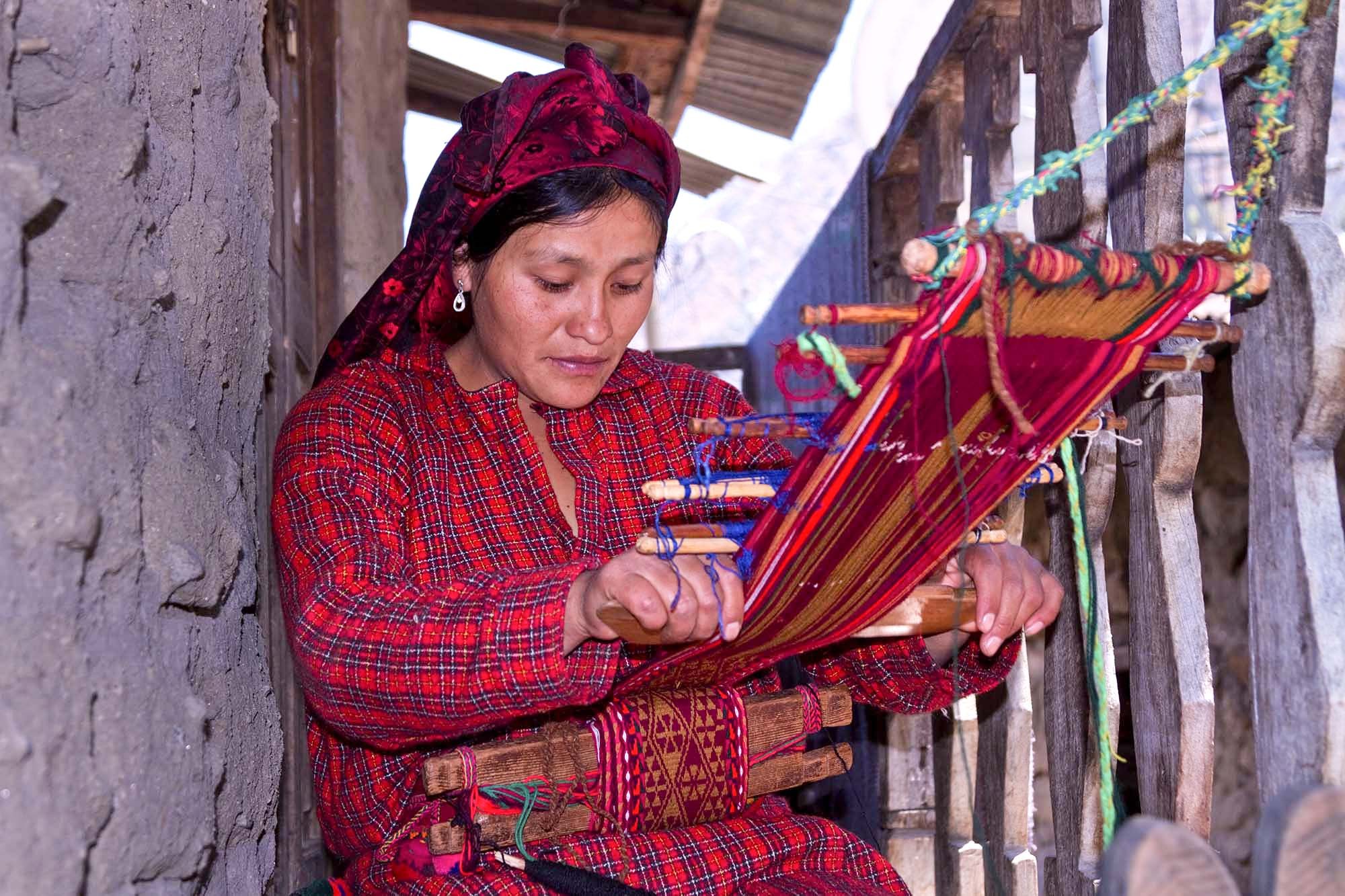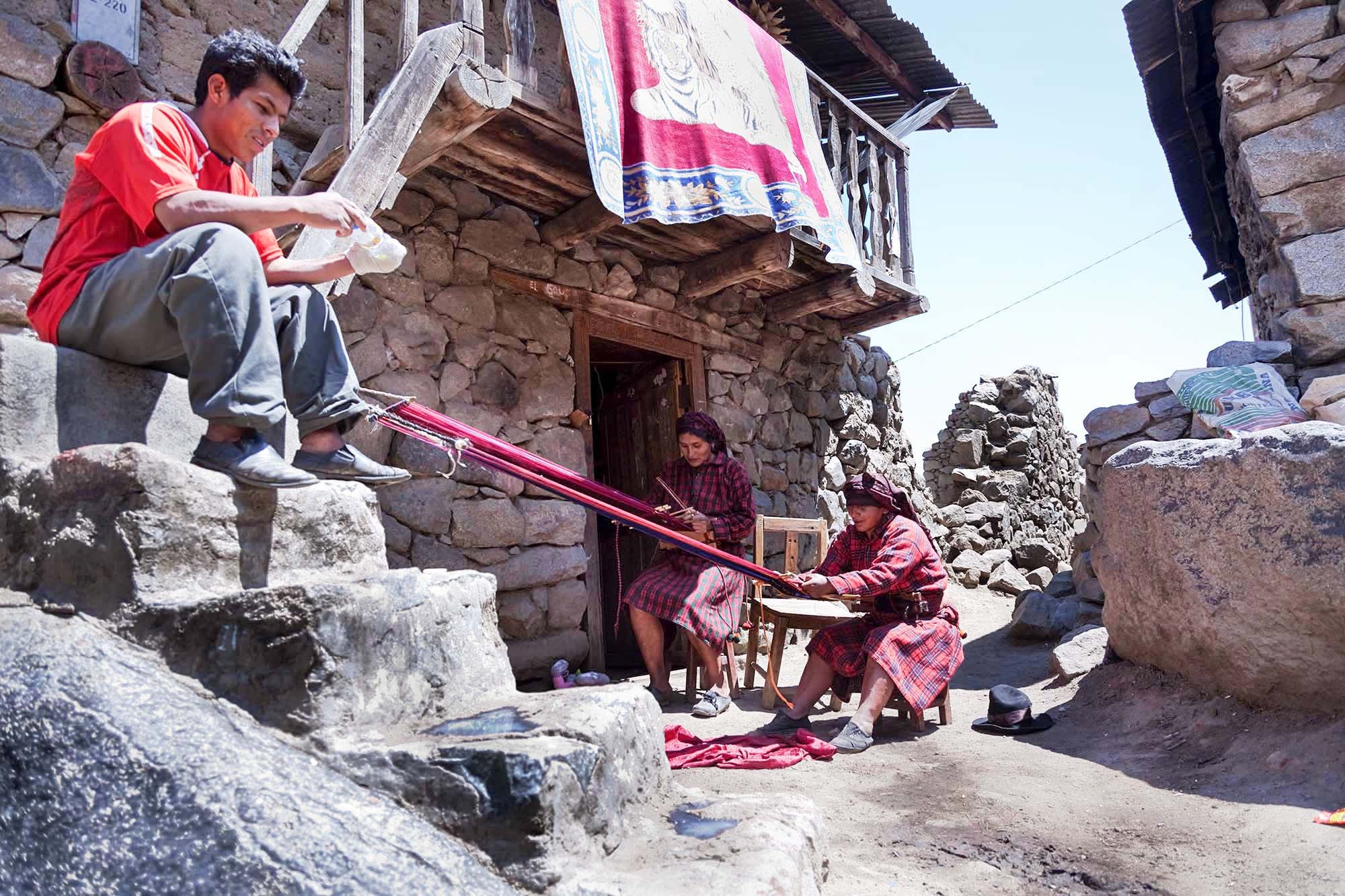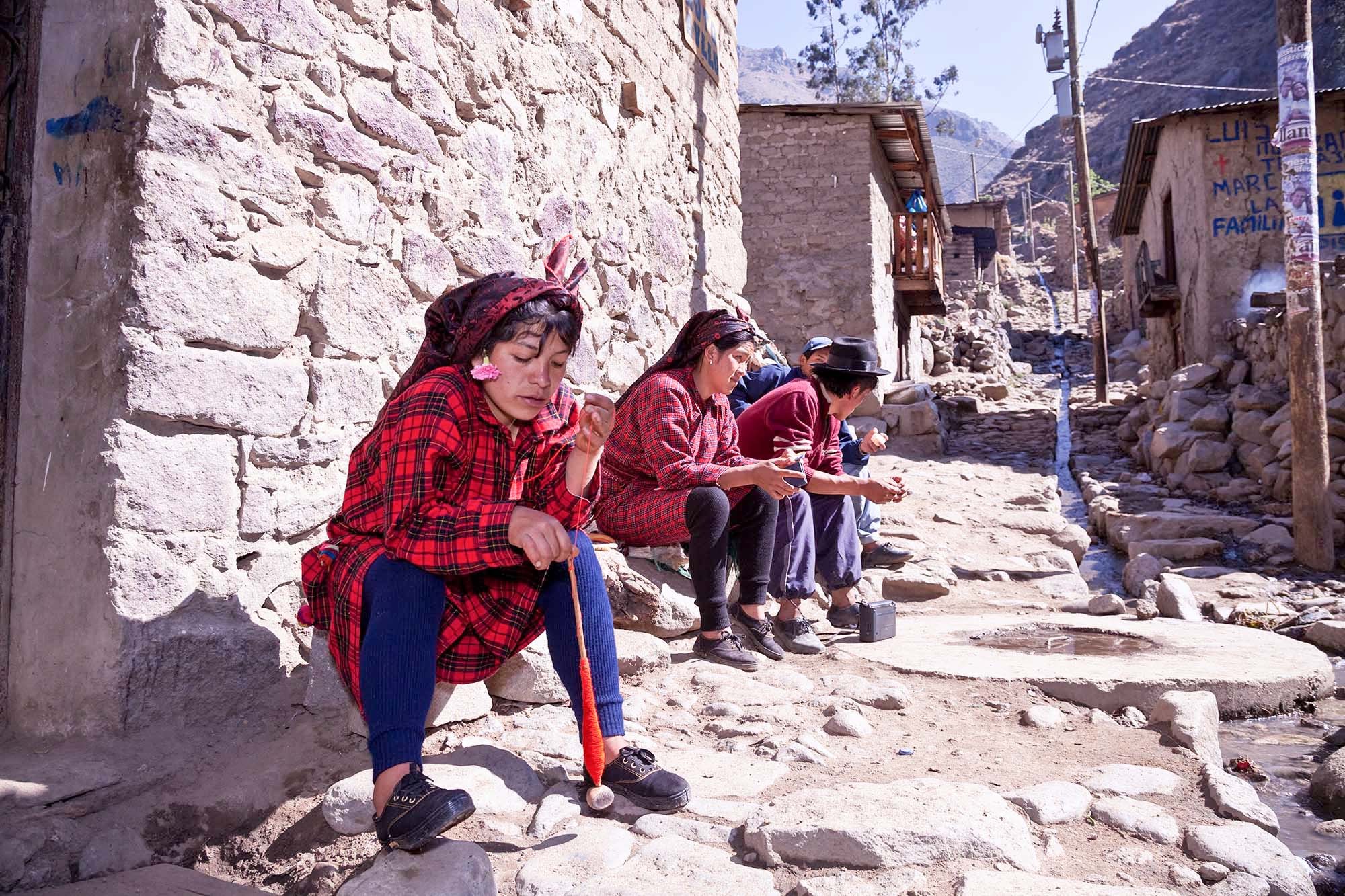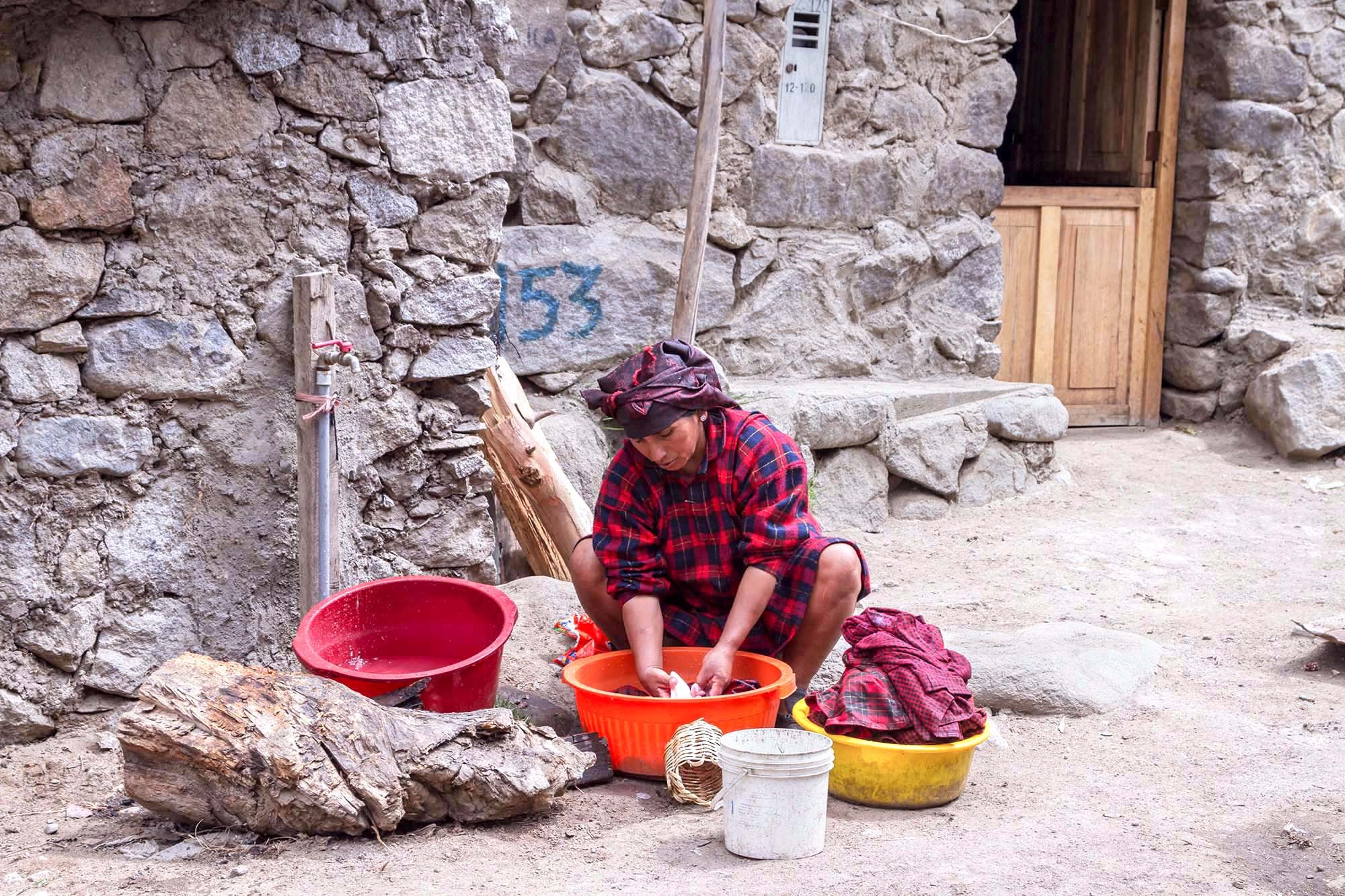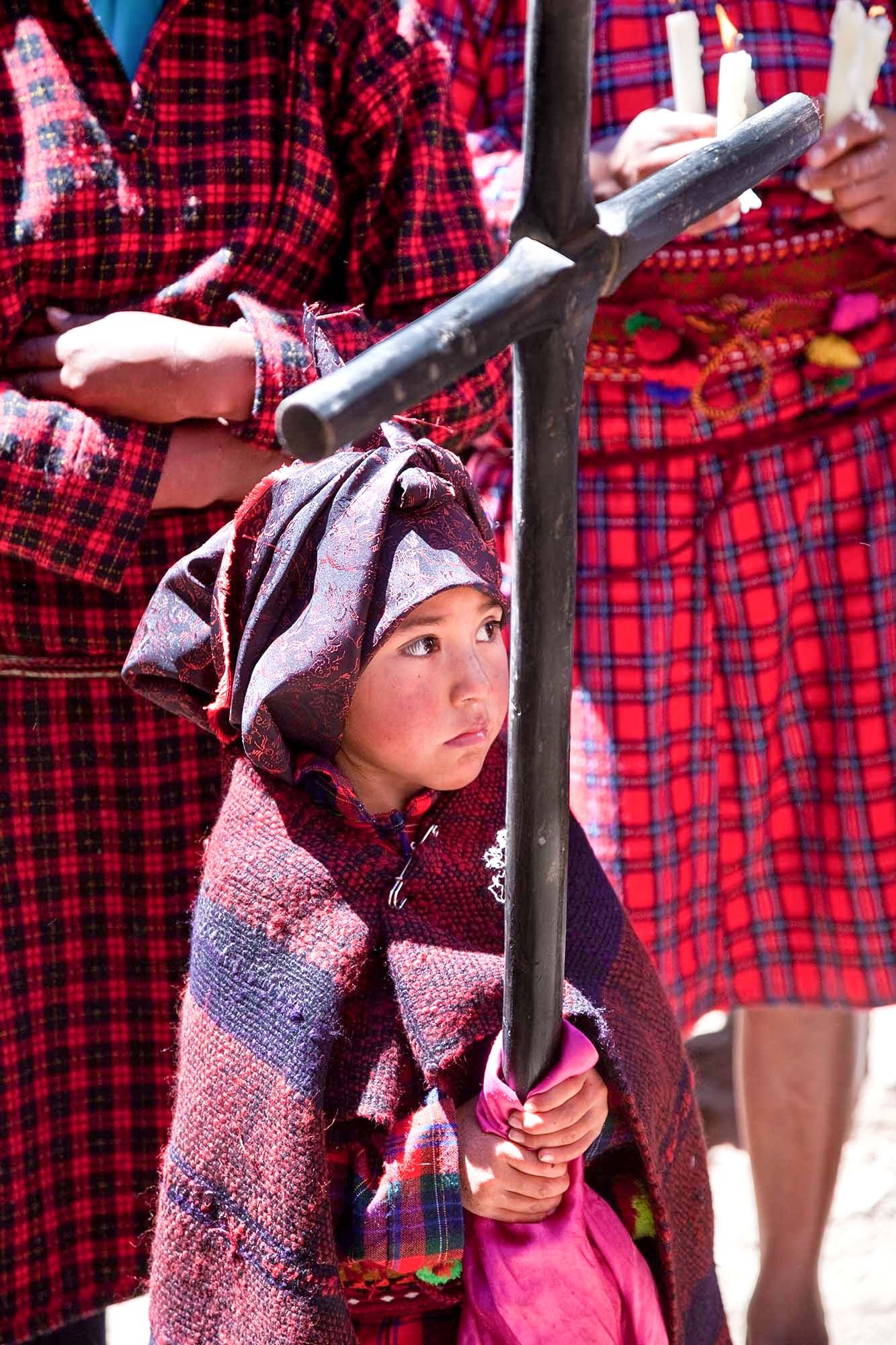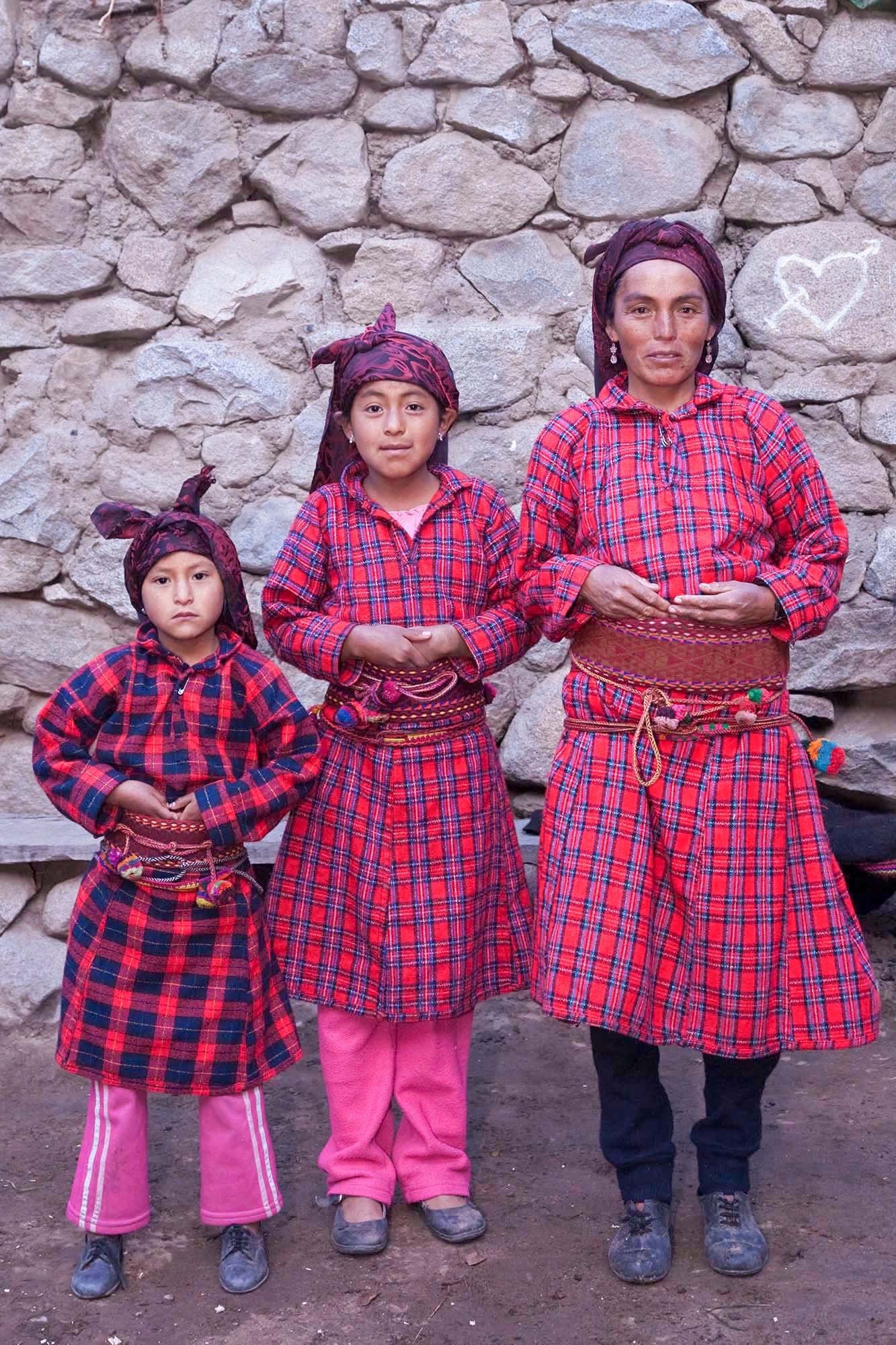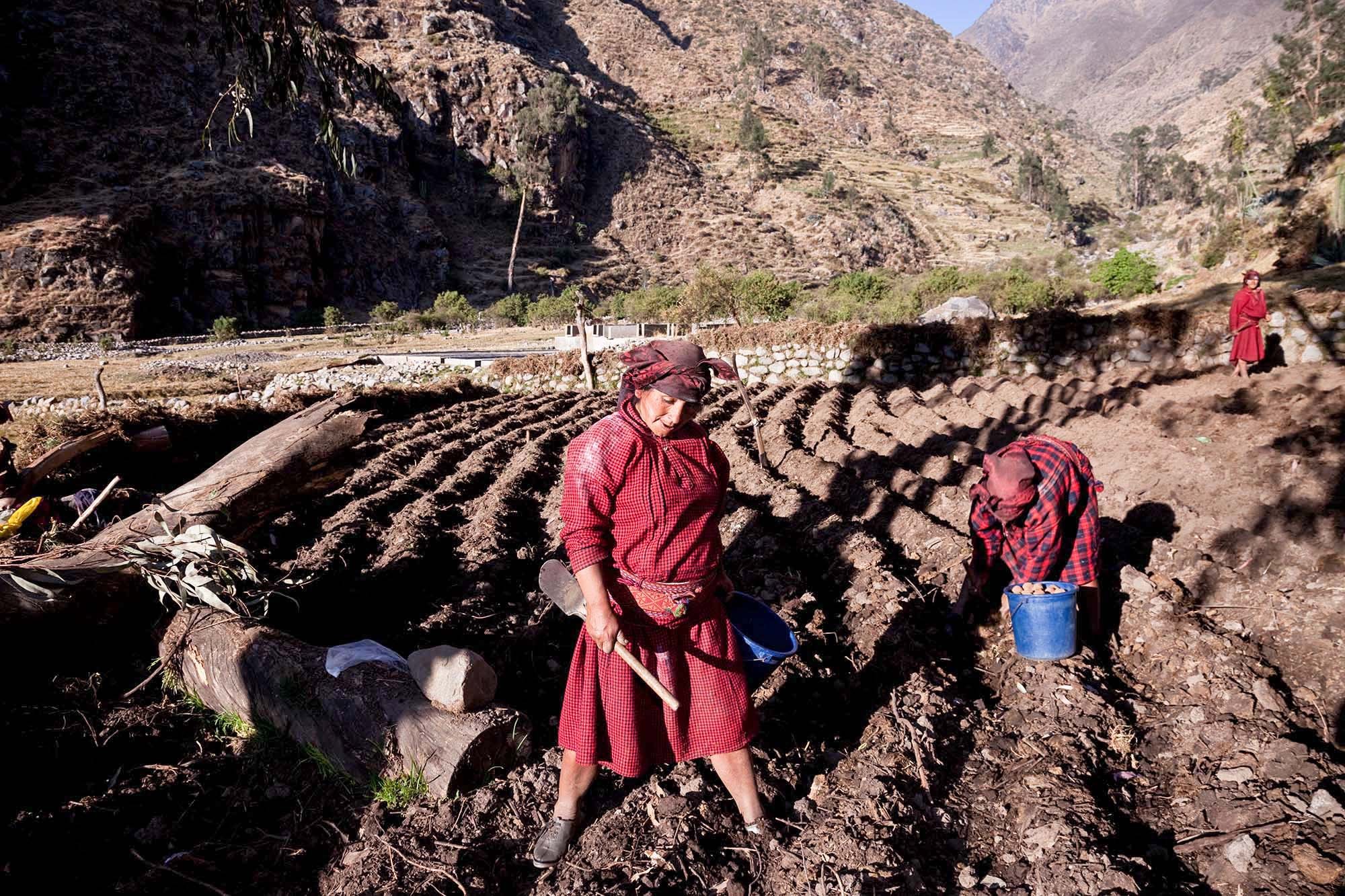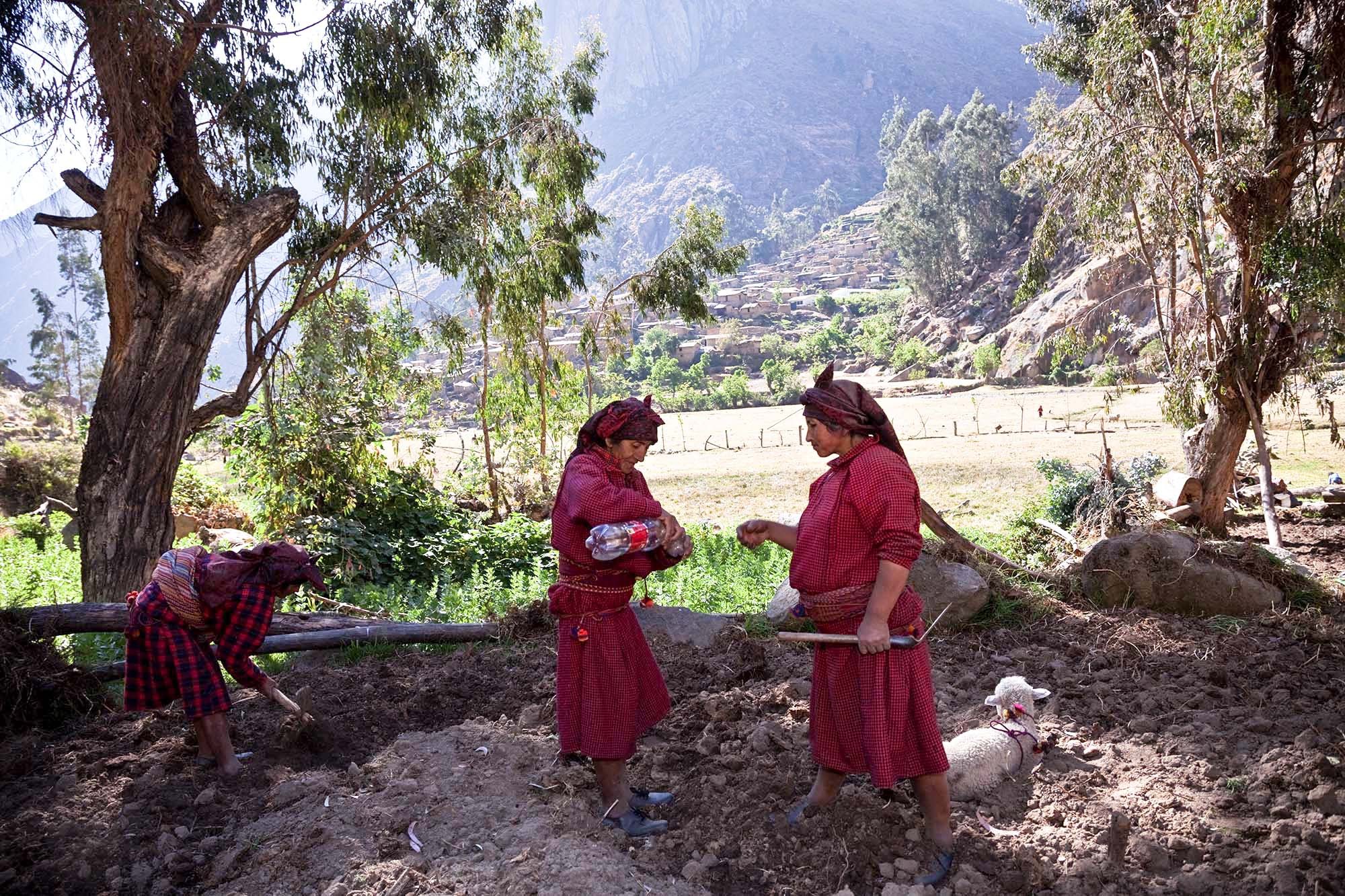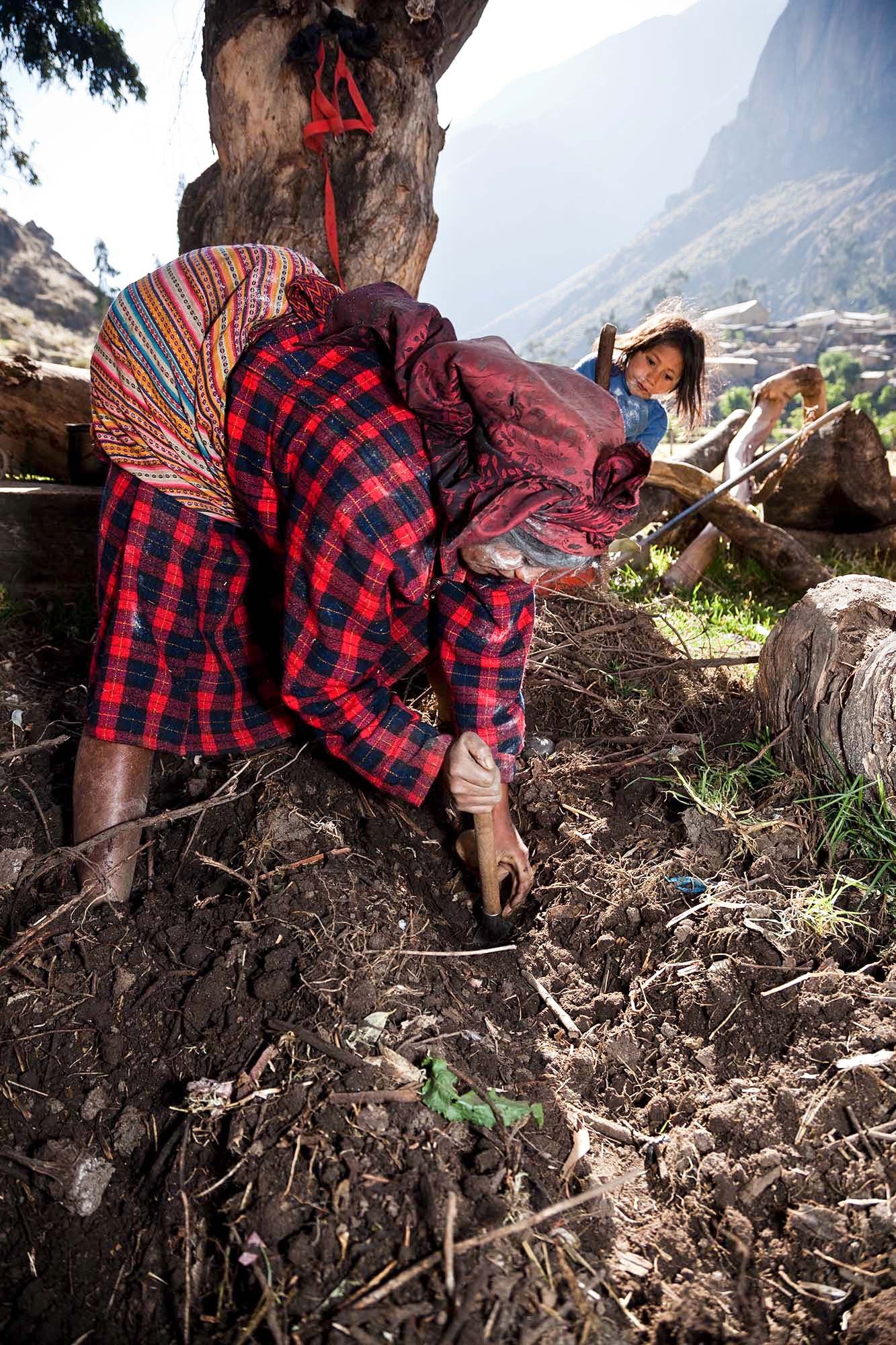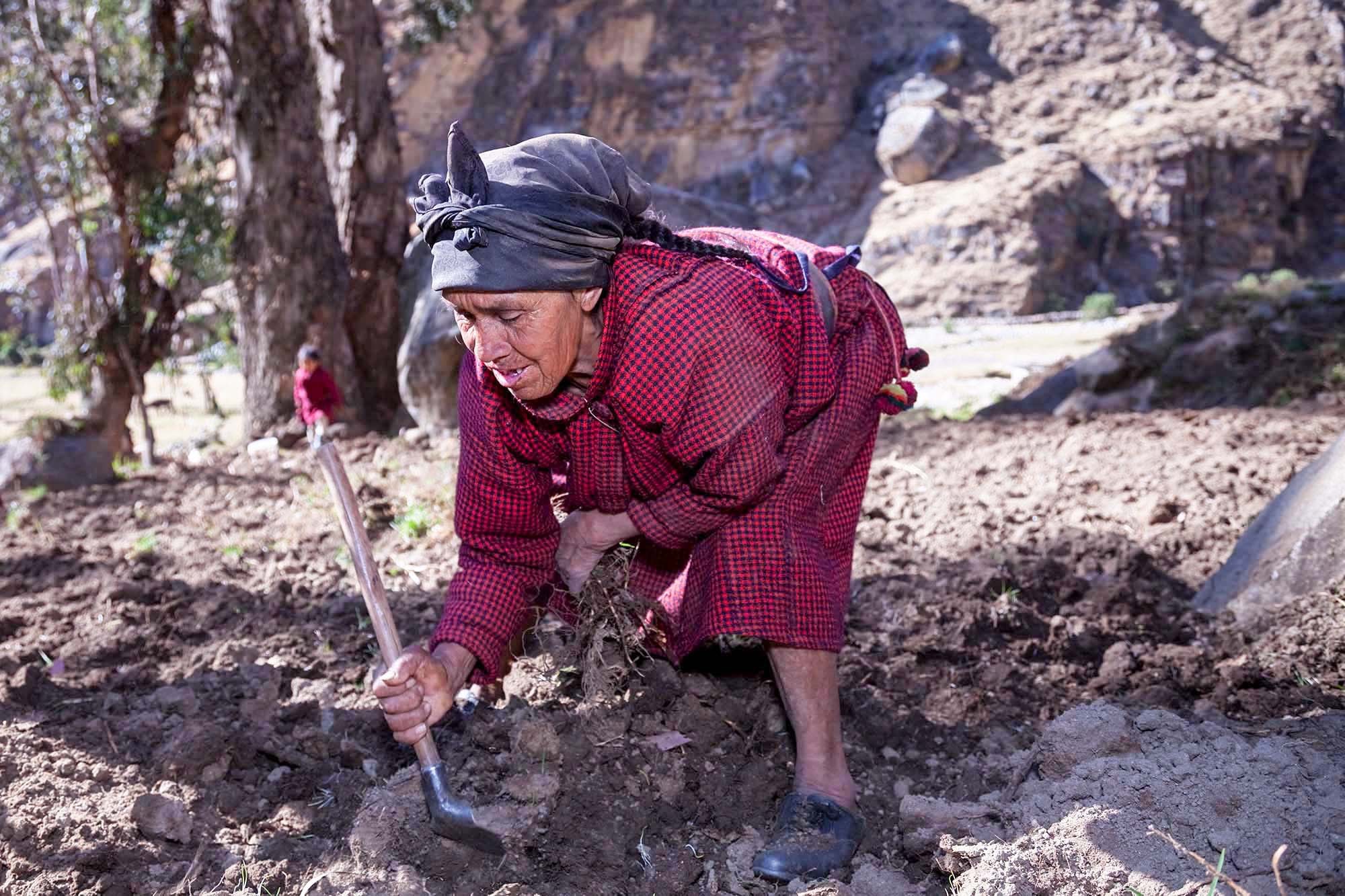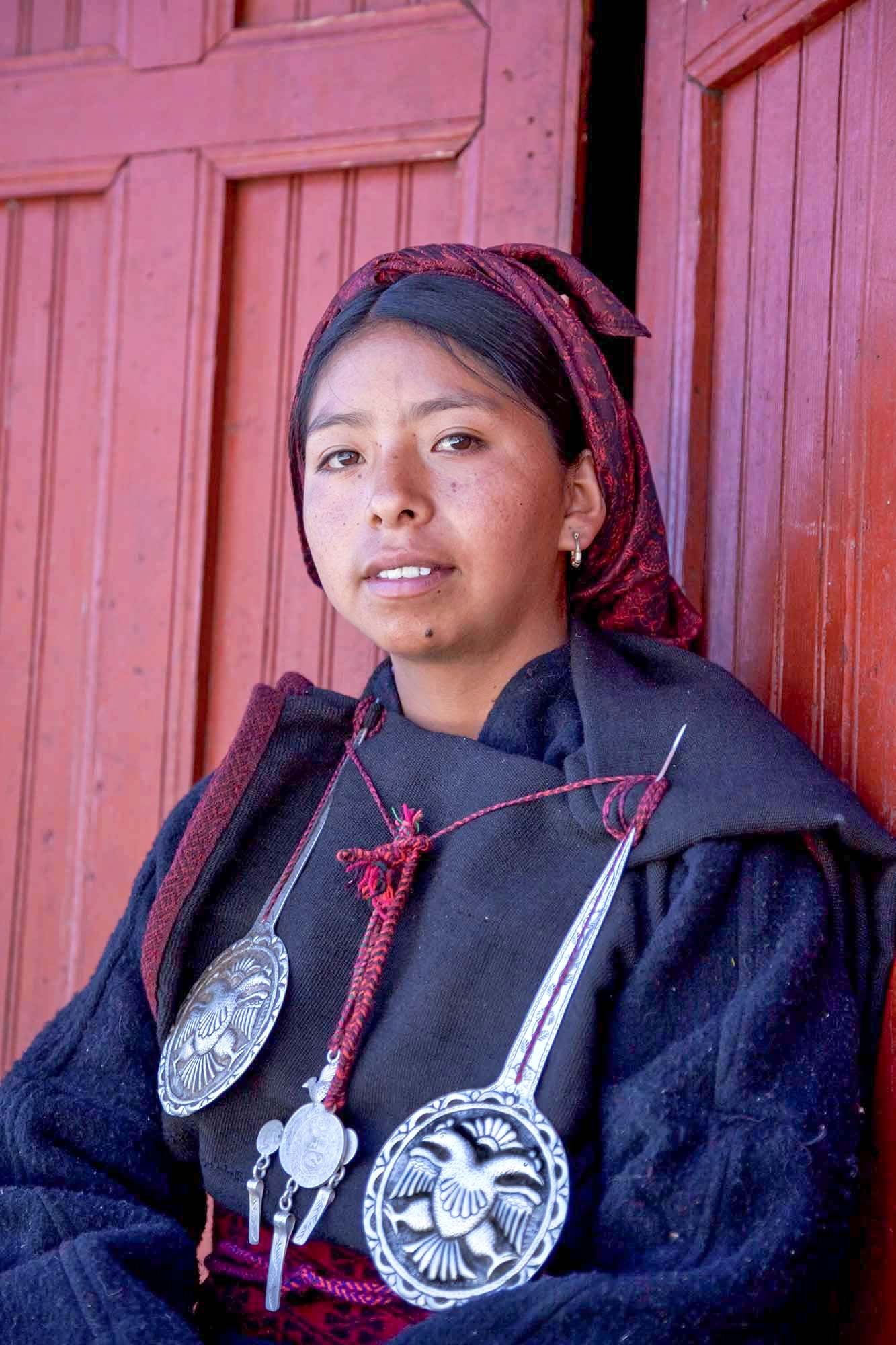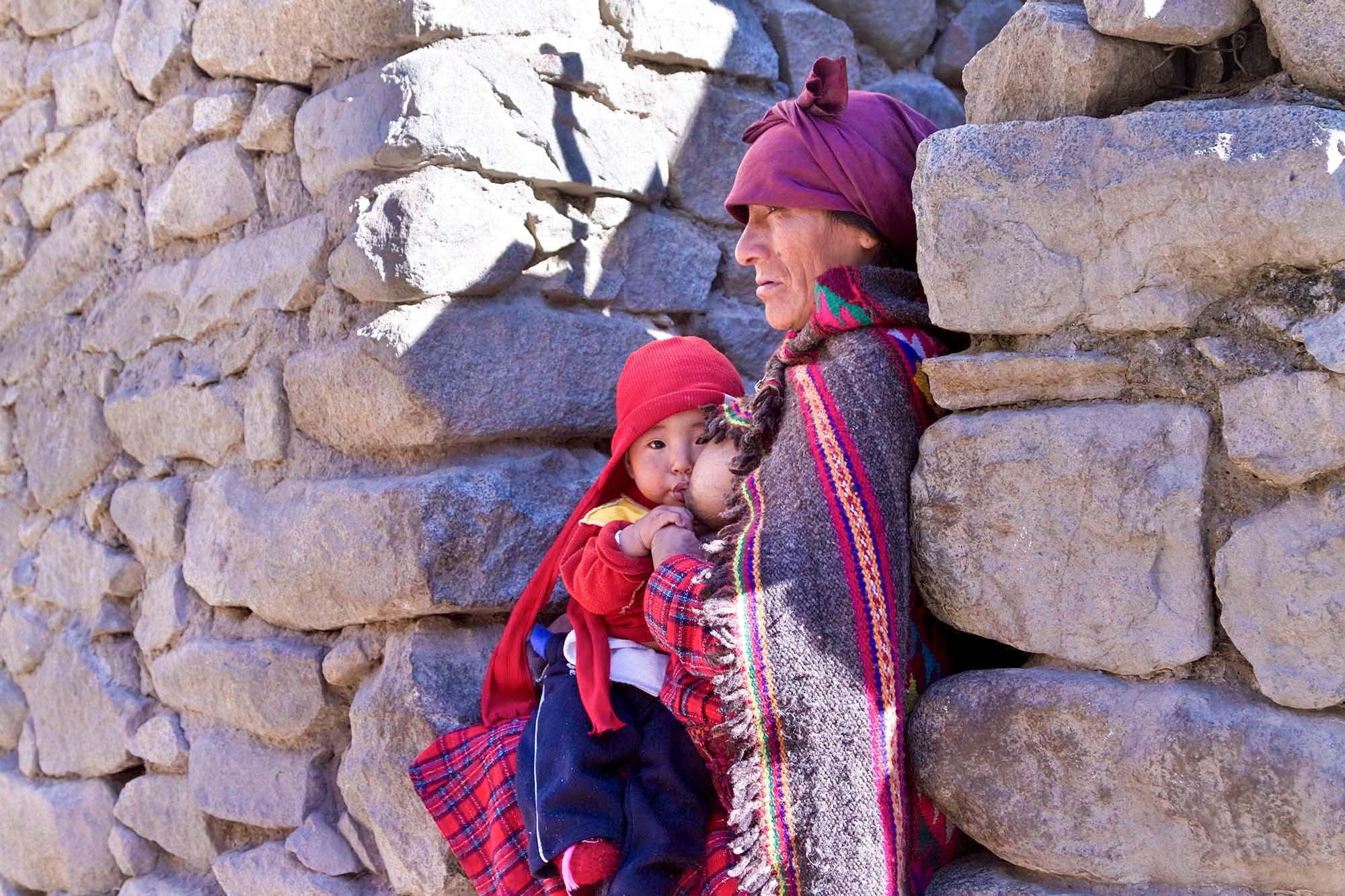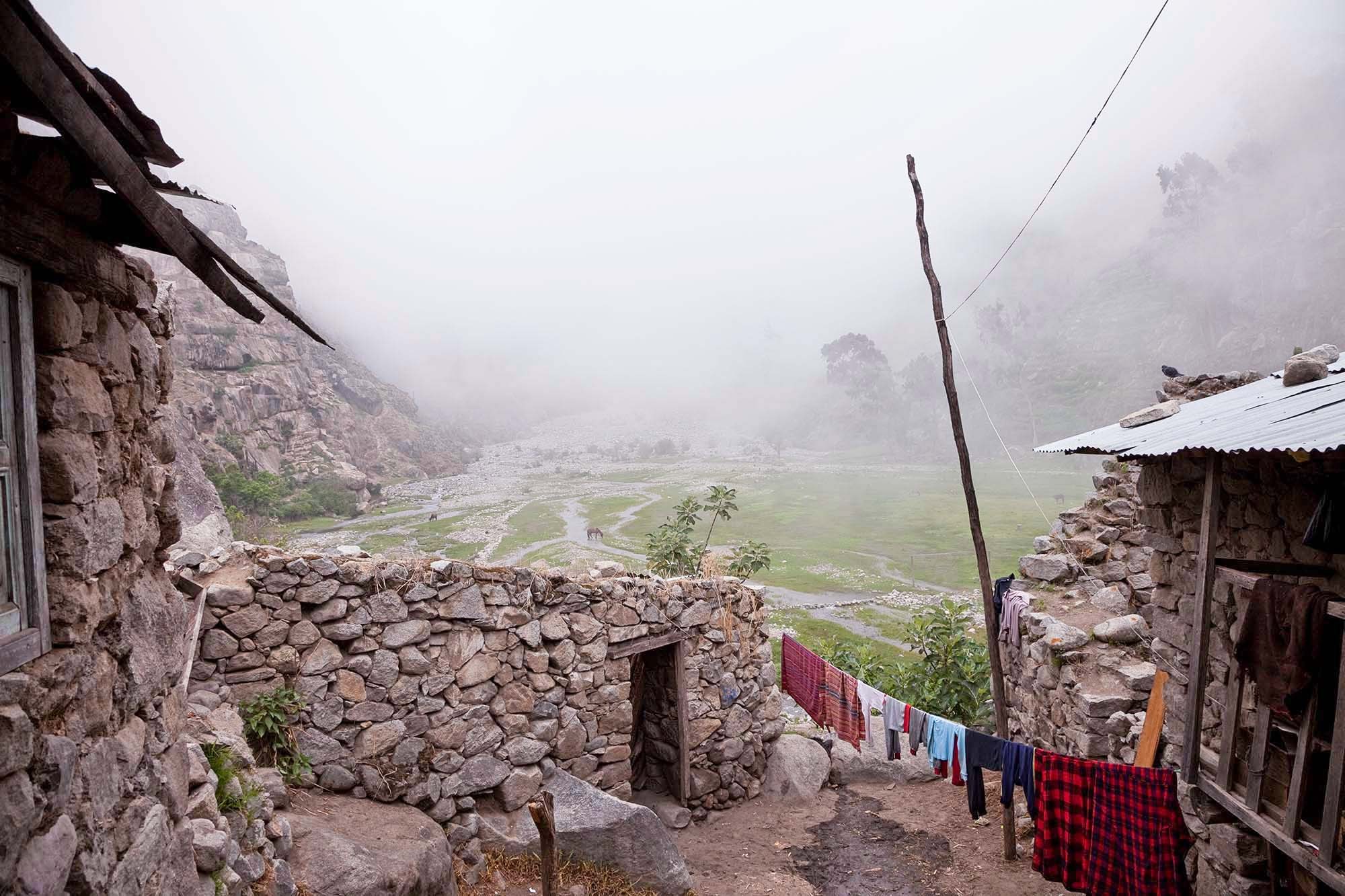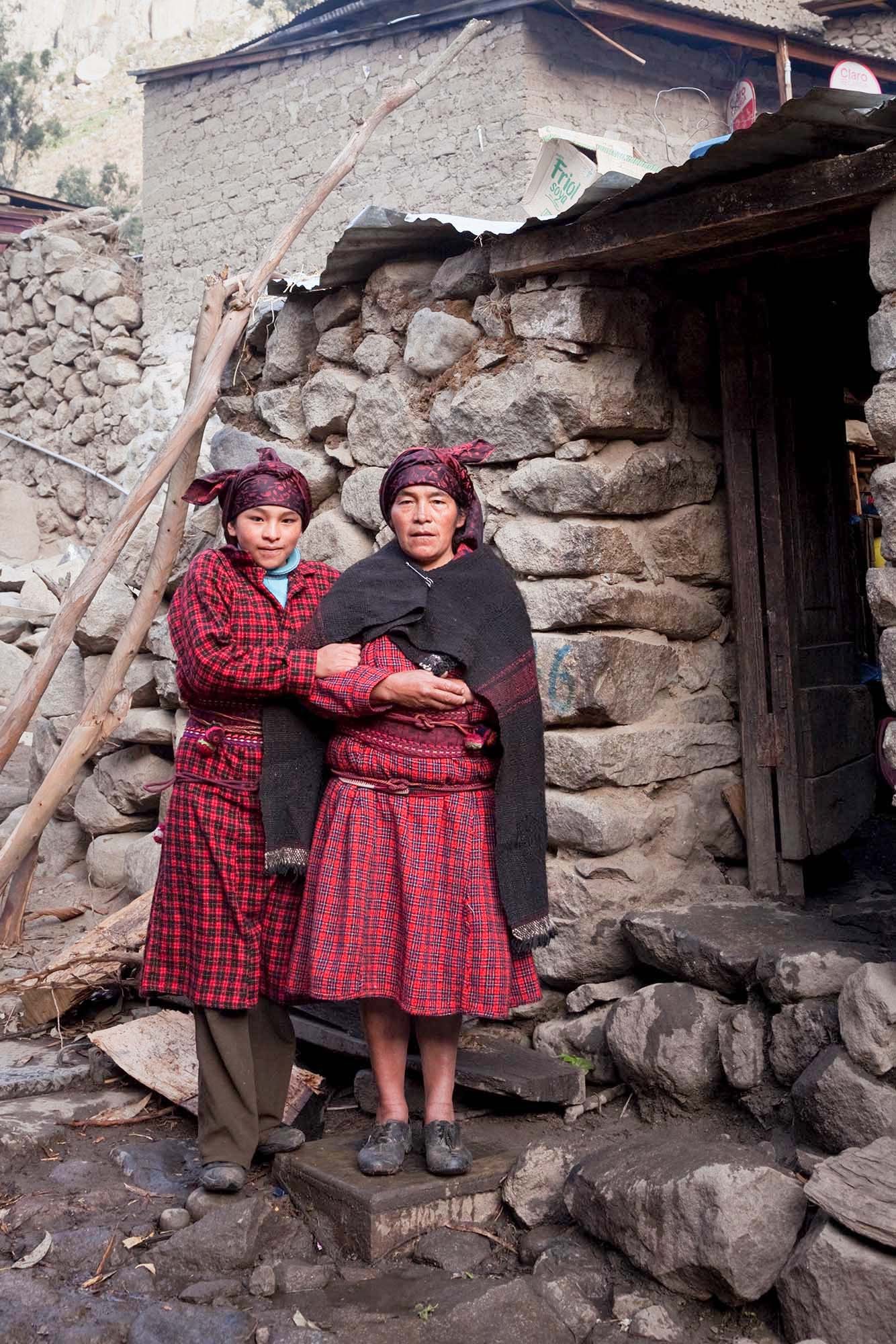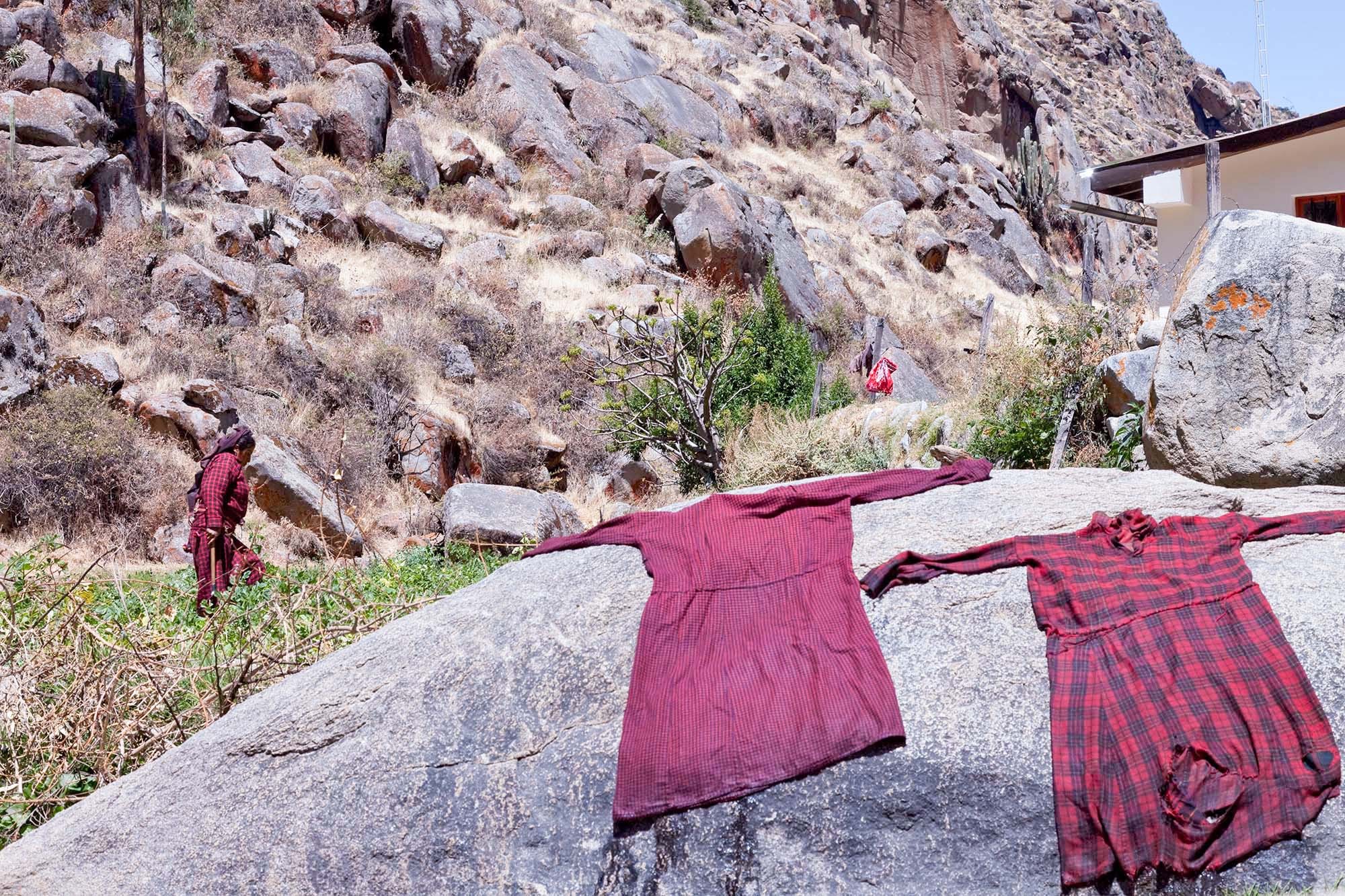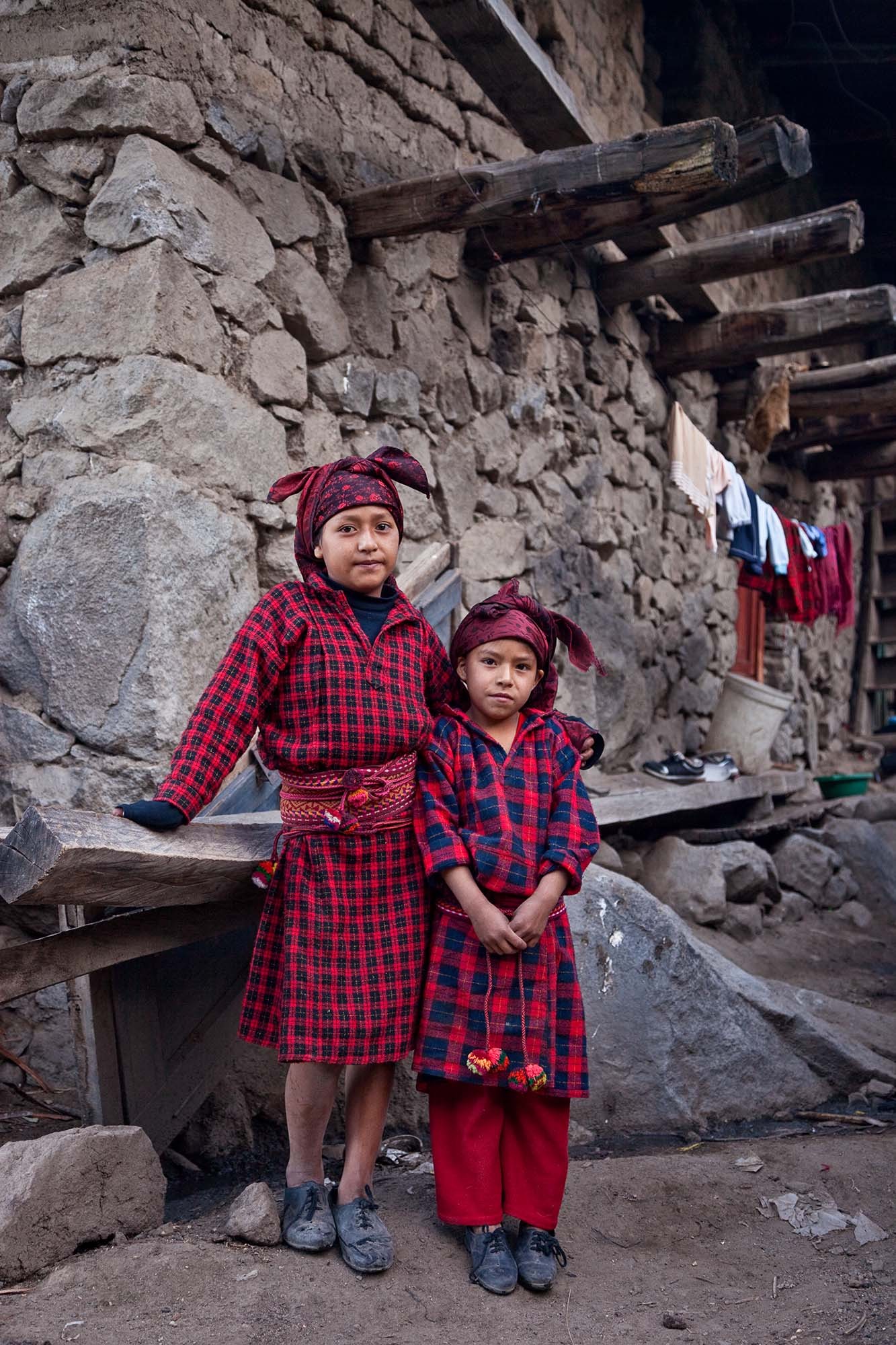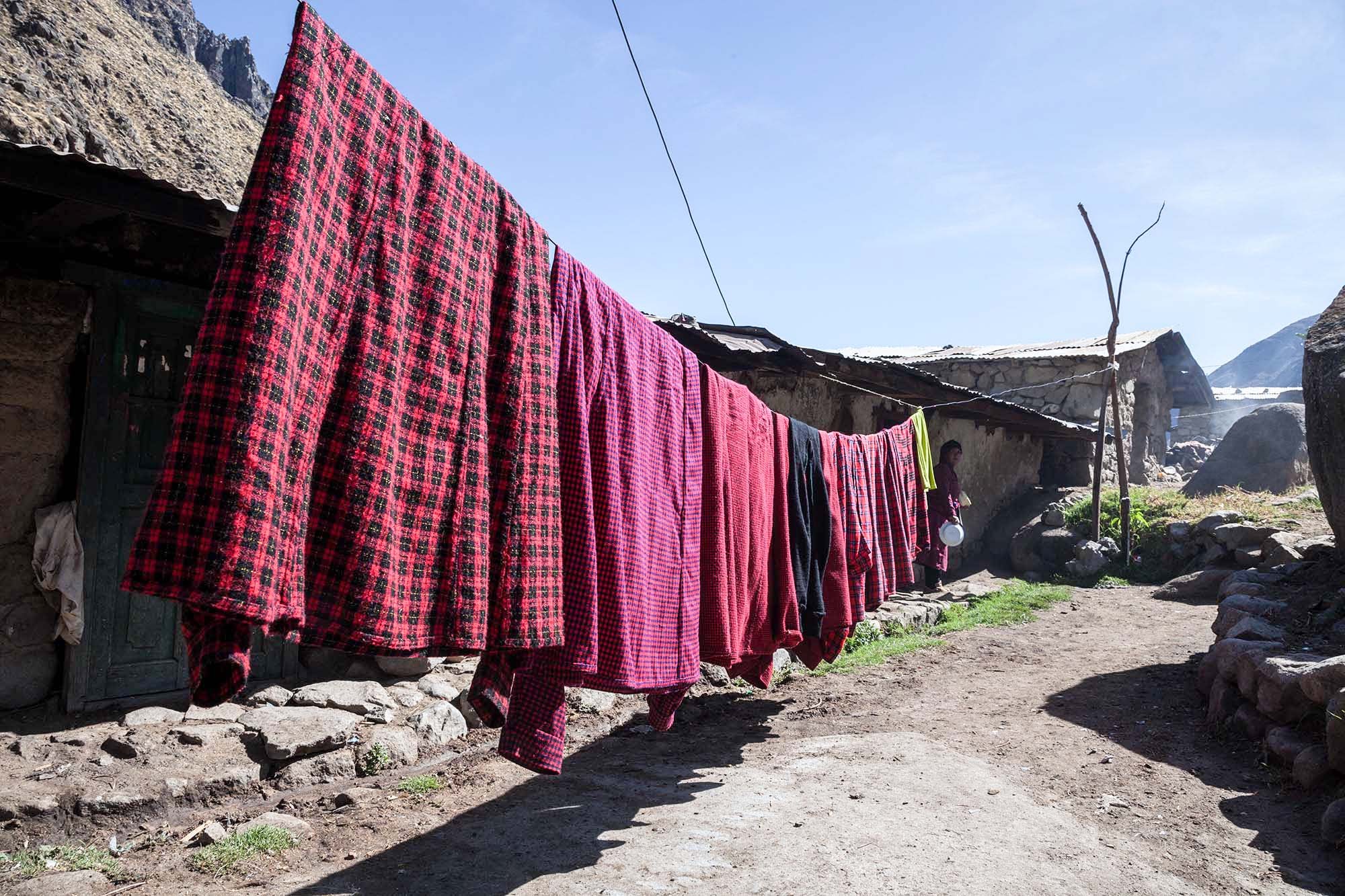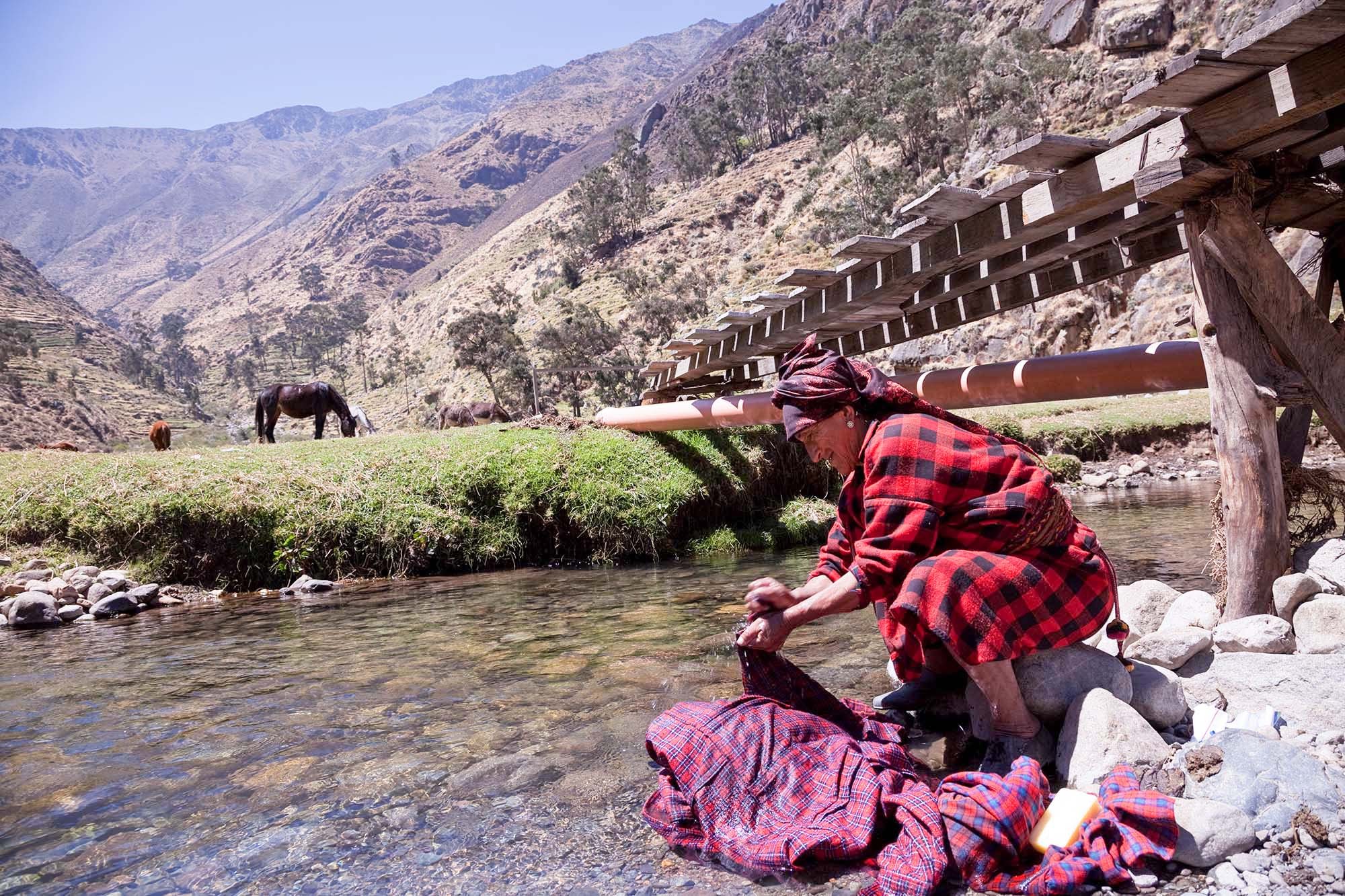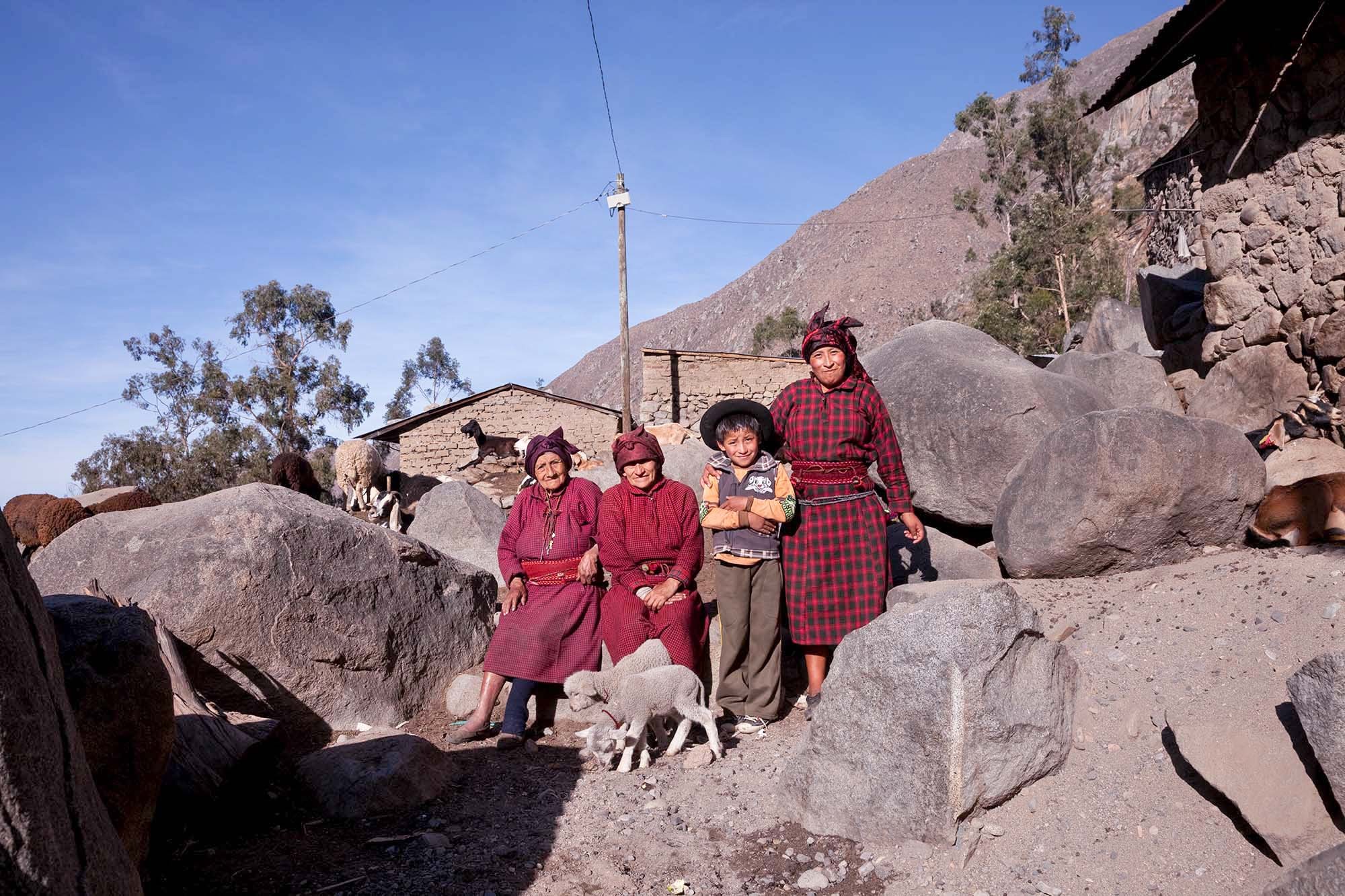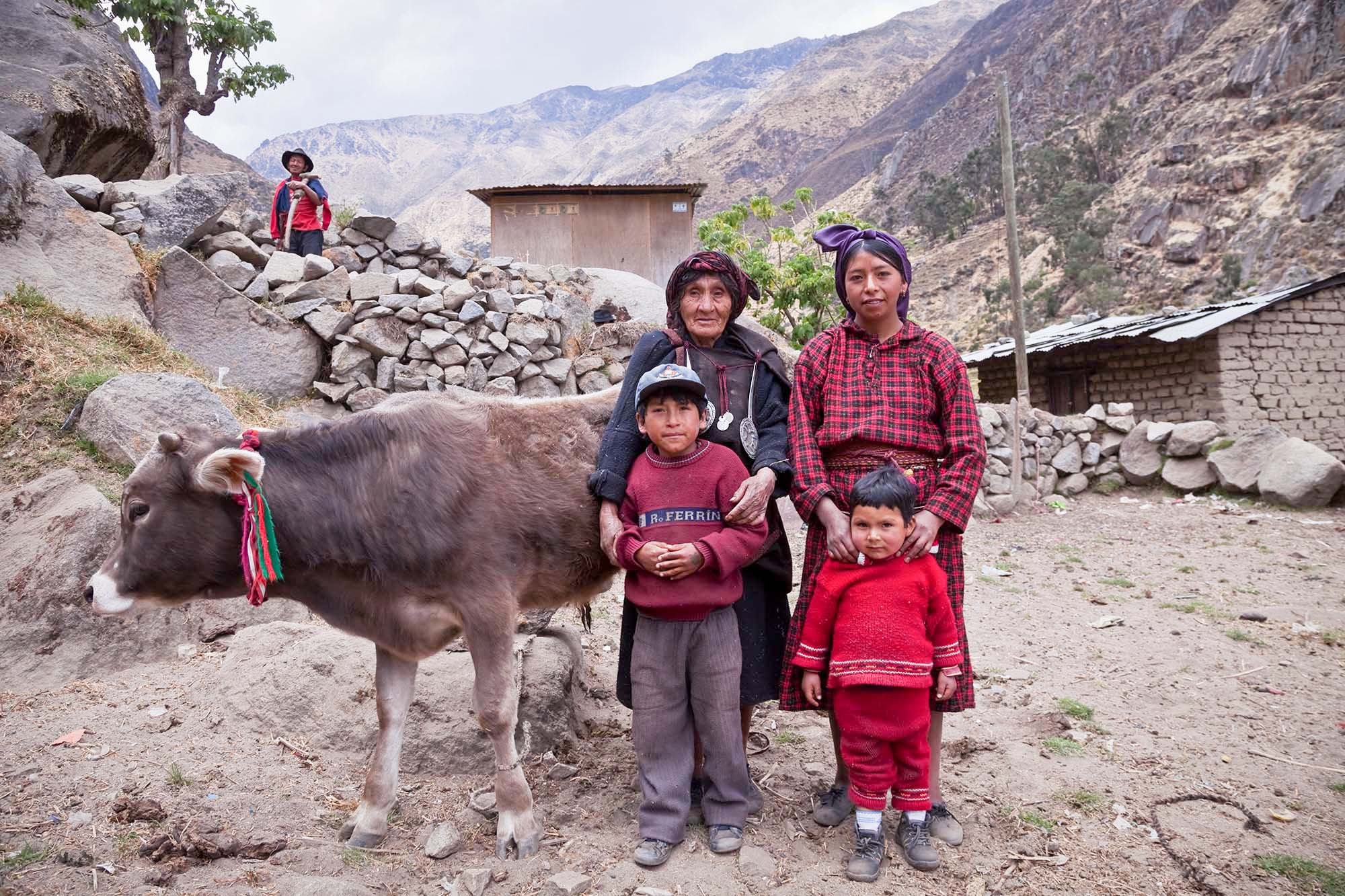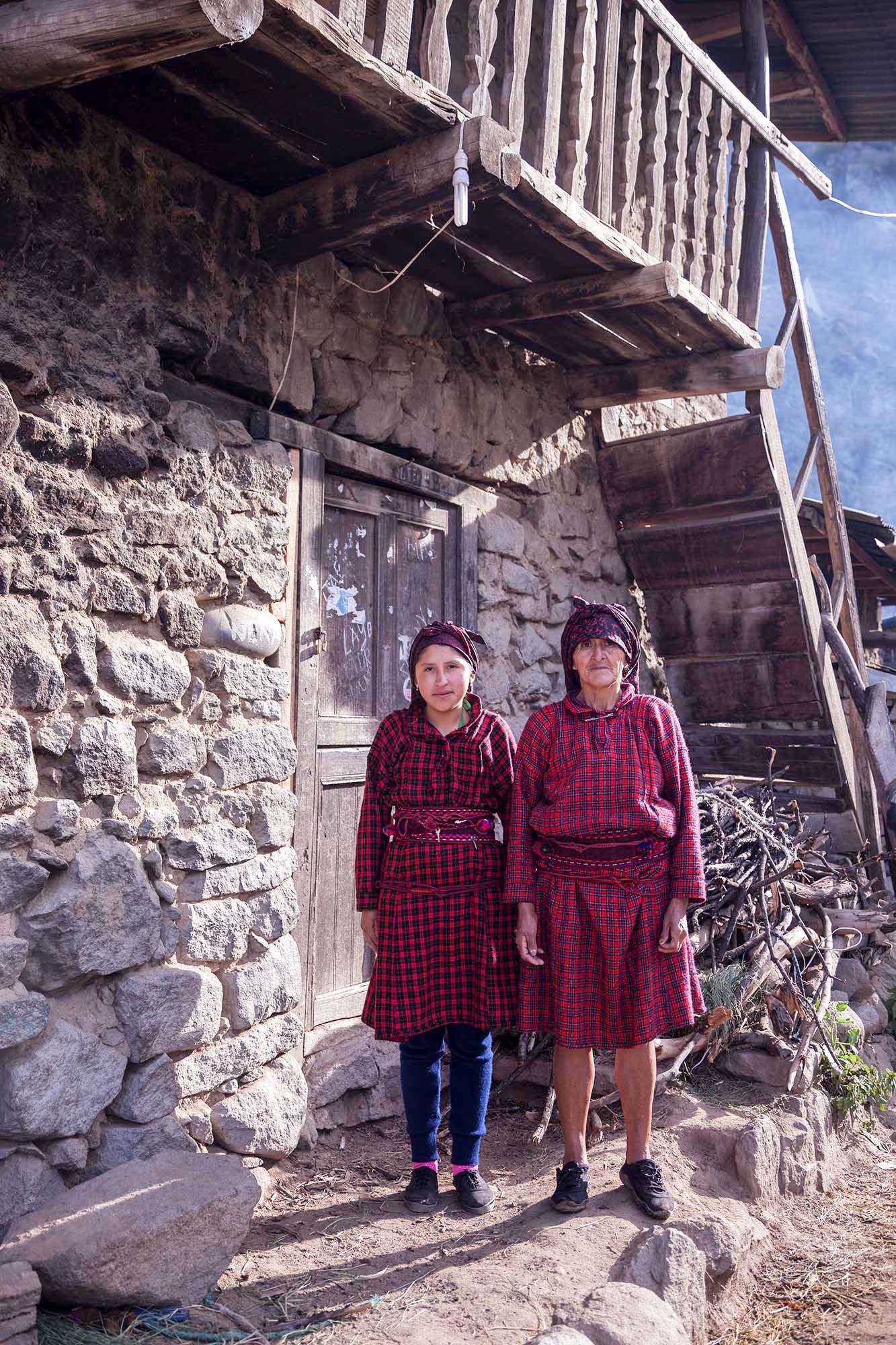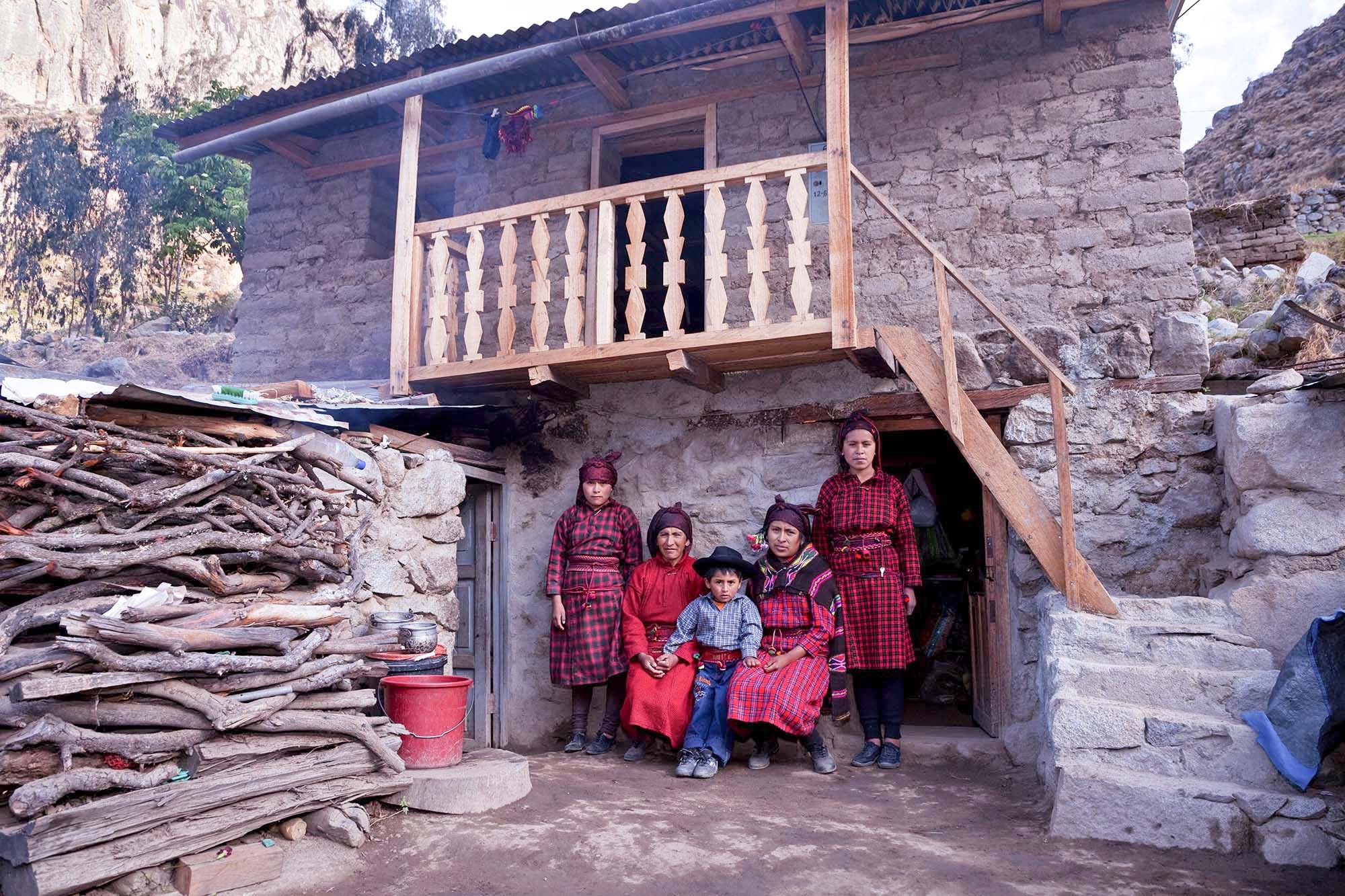On one of my photographic journeys in the coastal mountains of Peru, I met a group of women selling herbs. They were all dressed the same and spoke a language that was not familiar to me. As a language instructor for almost twenty years, I was very curious and asked around about them. People told me that they were the strongest women in the area. They travel by foot across the mountains to do business away from their home selling their herbs or their cattle. Two years later, after hours of traveling by bus, and then hiking up a steep rocky path to an elevation of 9,000 feet, I found the Jaqaru women of Peru. I entered San Bartolomé de Tupe, a town of 300 people, mostly women and children who speak Jaqaru, a language that is approximately 3,000 years old. Tupe is a very small Andean town in the department of Lima.
There were no tourists in Tupe that day and I never met any tourists during my frequent visits to the area. Every so often, I saw anthropology students working on assignments for a day or two. I was the first photographer who lived there. I lived there off and on for a period of two years. It wasn’t easy to live in a place where running water, sewers, and roads didn’t exist. I wondered many times how Tupe’s inhabitants, especially the women, survived the cold and the hardship of this land for so many centuries. It is little wonder they are known for being strong. Tupe is so isolated that many times not even the priest or the nuns are present at their religious celebrations.
It took me a long time to convince the Tupinos that I was there just to document their lives not to exploit them as they believed others had. The first year as an outsider, I concentrated on interviewing the residents, and photographing and filming community activities, daily work in the farms, their religious festivities, the branding of their cattle, and other aspects of daily life. In my eyes, their entire life was about work and survival, and women had very little time left to nurture their families.
Most of women in this community want their children to be educated and unfortunately, their children have to leave their community for that to happen. With time, those who leave will lose their language skills and even their traditions. After I gained some trust with them, somehow, I wanted to offer them something in return for their kindness and decided to photograph their families. It was a challenge to bring families together but in the end, they were happy to see, for the first time, a family portrait in their homes. Some of the people in the images have passed away, some others have left for a better life in the cities, and in January 2017 the road to Tupe was completed. More change is coming…

